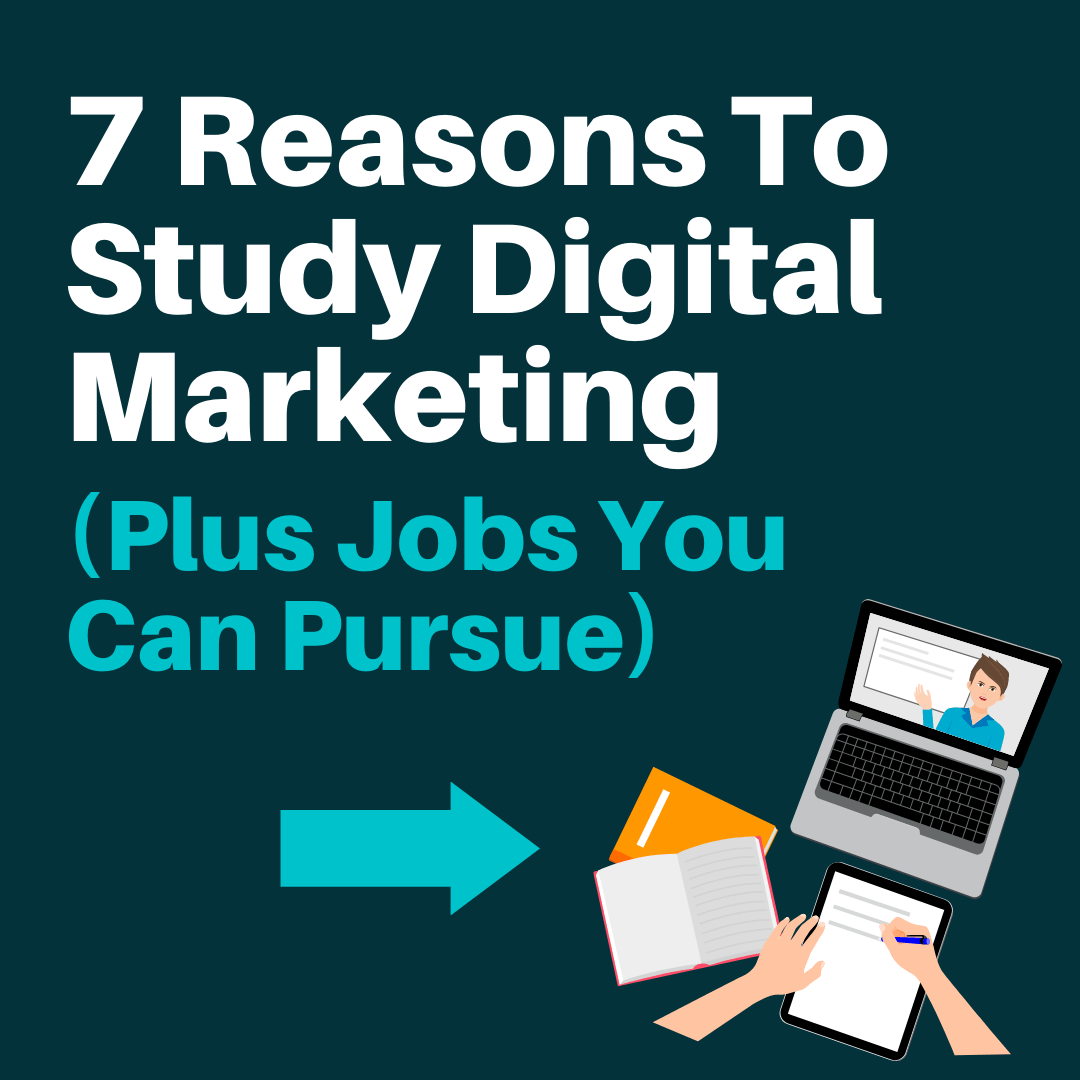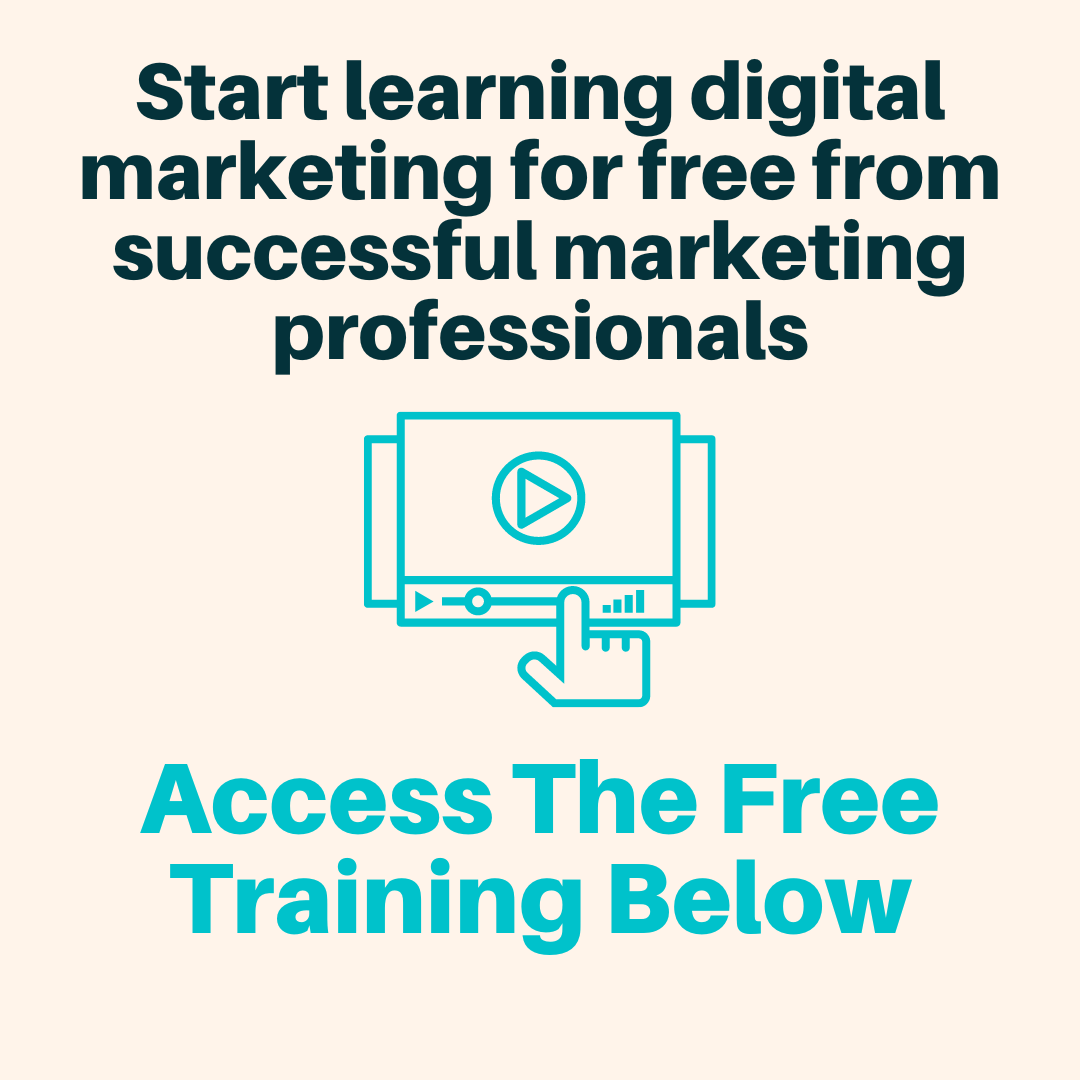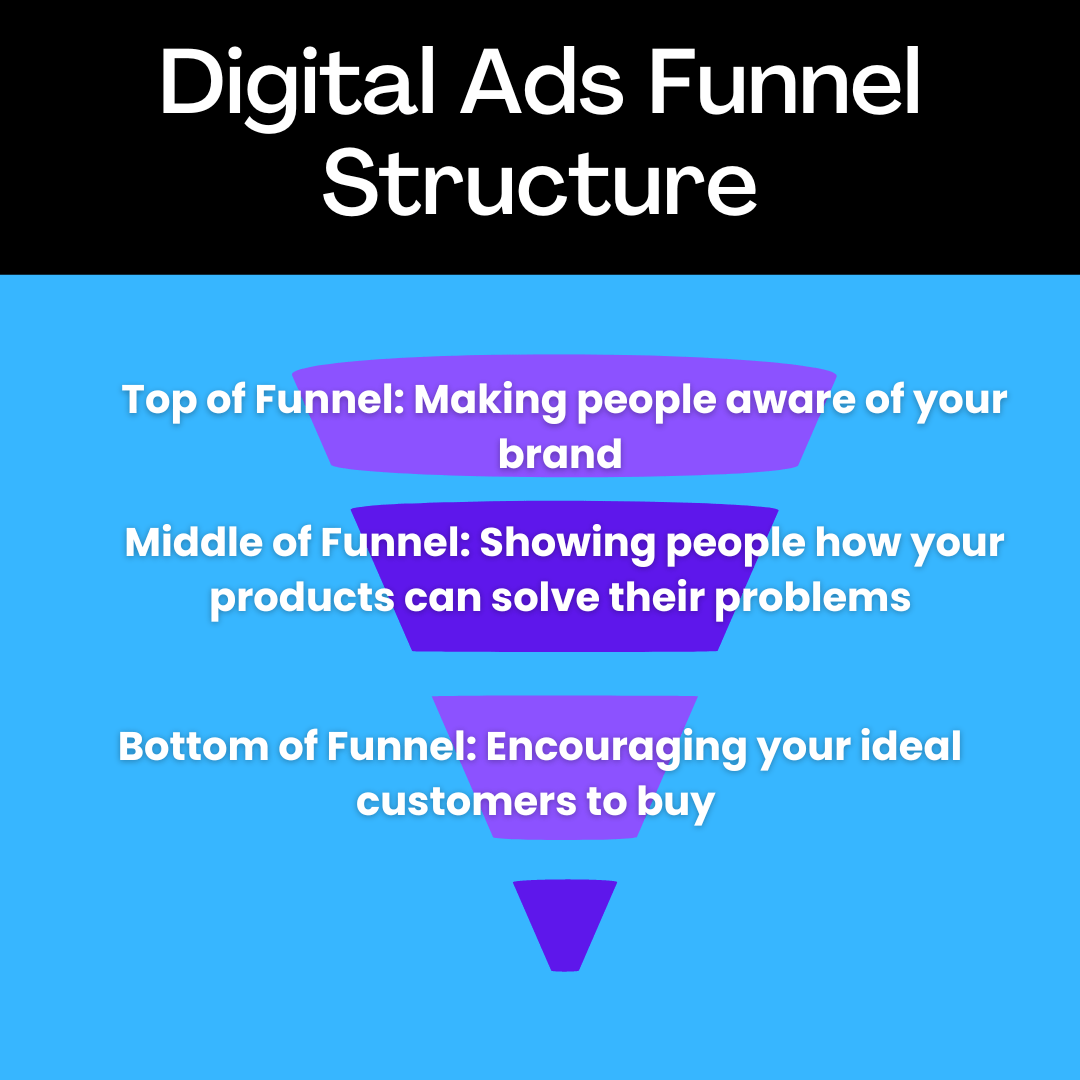Free Digital Marketing Training
Learn Top Marketing Strategies And Methods Right Here For Free
Get access to free digital marketing training that includes:
1. Local SEO
2. Digital advertising
3. How to build a landing page
4. How to build a funnel
Plus more free marketing training right on this page.
Scroll Down To Access The Free Marketing Training & Courses
P.S.
I don’t beat around the bush of the subject.
I don’t know about you, but I don’t enjoy webinars or online trainings where the presenter beats around the bush of the subject and the whole thing is really a big sales pitch. That is not these trainings. Besides a quick intro at the beginning, I dive into the subject right away. I go pretty fast too but you can always watch it again and take notes if that helps. Get the info that will really help your business and not a lengthy sales pitch.
What’s included in these FREE trainings
What is a marketing funnel
Elements of a successful landing page
And so much more
How to rank on the first page of Google
Digital Ads Best Practices
Meet The Instrucor, Adrian Hallberg.
My name is Adrian Hallberg and I’m a passionate marketer. I apply my experience and expertise including branding, growth strategies, data, analytics, content, SEO, paid ads, and more to not only help businesses grow but to help businesses thrive. Over the last few years, I’ve achieved a lot of success in marketing. In 2021, I assisted in $2.2 million in marketing assisted sales for a company that did less than $80k in 2018.
I created these trainings with one goal in mind, to help people learn a valuable skill. Digital Marketing.
Adrian Hallberg
Ready To Learn In-Demand & Valuable Skills?
Access Full Courses From Leading Professionals On SkillShare (Get Started For Free)

Learn About Digital Marketing
The Ultimate Guide To Learn Digital Marketing
Discover All The Top Strategies And Components To Be Successful Learning About Digital Marketing On This Page Below
Marketing Skill #1
How To Build A Landing Page
Crucial Element Of A Funnel
The Four Topics We’ll Cover Are
- 3 Types of Landing Pages
- 15 Tactics for a Perfect Landing Page
- Some Notes on Designing Your Page
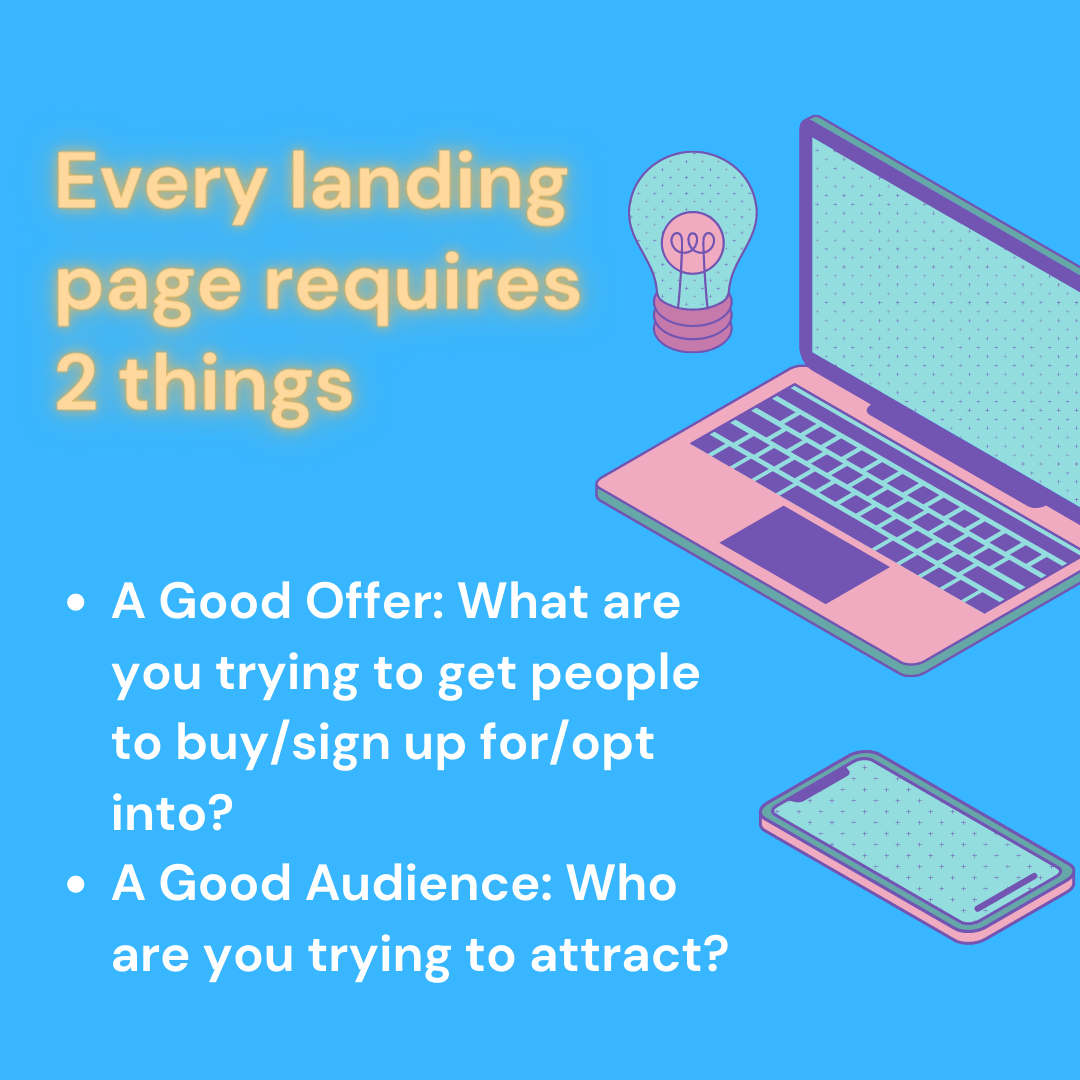
Part 1: What Is A Landing Page?
A page you direct a prospect to that encourages them to take a specific action such as…
- Opt-in to a lead magnet, resource, newsletter, etc.
- Purchase a product or service
- Fill out a form or request for information
Landing pages are critical because they are involved in every digital marketing campaign you run
Part 2: Different Types of Landing Pages
NOT ALL LANDING PAGES ARE CREATED EQUAL
Squeeze Page
Purpose: get a small amount of information such as an email.
Uses:
- Opt-in for a newsletter, discount, or other special offers
- Opt-in for value in advanced content like lead magnets, resources, tools, etc…
- Lead generation
Long-Form Sales Page
Purpose: sell products or services by answering your prospects most burning questions using the power of written word
Uses:
- Selling entry-point offers
- Selling core offers
- Selling high-ticket items
- Selling complicated products/services
Video Sales Letter (VSL)
Purpose: sell products or services primarily through a video format. Basically just a video versions of a long form sales page.
Uses:
- Selling entry-point offers
- Selling core offers
- Selling high-ticket items
- Selling complicated products/services
Part 3: 15 Tactics for a Perfect Landing Page
#1 Market Callout
Your visitor needs to know they’re in the right place, so make sure you call out to them.
You can do this…
- Directly: “Attention: (Insert Audience Attribute) EX. Real Estate Agents”
- Indirectly: with recognizable images and vocabulary
#2 Clear, Concise, & Easy to Understand
The Best Landing Pages have a single message and make a single offer. It should always pass the 5 second test.
Within 5 seconds, can your prospect answer these questions?
- What’s in it for me?
- Why should I care?
- What do I do next?
#3 Compelling Headline
A compelling headline is always:
- Clear
- Concise
- Benefit-rich
- Attention-getting
- Hitting on a pain point or struggle
#4 Use Social Proof
Showing customers..
- Reviews
- Social media links
- Customer highlights
- Impressive statistics
help you customers know they are making a “socially proven” and smart decision by opting in.
#5 Brand Consistency
Your pages might be different, but they should all represent your brand in a similar feel
#6 Source Congruency
Your landing page’s design and copy should match that of the ad or page that directed your prospect there. It should continue the story.
#7 Visual Privacy Policy and TOS
This is a requirement for most pages to be on Google, so make sure you always include a link to your…
- Terms of service
- Privacy policy
#8 CTA Above The Fold
Most visitors don’t scroll so make sure you have a call to action button in a prominent spot “above the fold”(high enough on screen so that the prospect doesn’t have to scroll down to see it)
#9 Contrasting CTA Button
There’s a ton of debate on what color your CTA button should be, but really, it doesn’t matter so long as the color is contrasting.
This means it needs to stand out against the background!
Bright colors usually work best for this.
#10 Custom Button Text
Make sure you have a very clear CTA that tells the reader exactly what clicking will get them.
“Submit” just doesn’t cut it..
It needs to be compelling and clear!
#11 Limited Navigation
The landing page should not be busy or distracting from the CTA, so make sure there aren’t too many places to navigate.
Having multiple options to navigate to different pages will lower the conversion rate for your intended action
#12 Use Visual Cues
Visual cues that point the prospects eyes towards the intended action will help encourage action
You can use images like people on your page seemingly looking towards your CTA, or simple cues like arrows or boxes
#13 Hero Shot
Typically, an image or graphical representation of the product will bump conversions because it gets people to visualize using it themselves.
It isn’t always a slam dunk, but it’s worth testing!
#14 Relevant Form Fields
Don’t ask for information you don’t really need! Too many form fields can very quickly turn away more cautions customers.
Make sure the content you are giving is of proportional value (in the eyes of your customer) to the information you are asking people to share!
#15 Optimize for Mobile
Make sure you aren’t missing out (or actively turning away customers) on mobile with poor mobile pages.
Make sure your page elements are responsive and consider building out separate landing pages designed specifically for mobile viewers
#15 Optimize for Mobile
Make sure you aren’t missing out (or actively turning away customers) on mobile with poor mobile pages.
Make sure your page elements are responsive and consider building out separate landing pages designed specifically for mobile viewers
Part 4: Notes on Designing Your Page
There are 3 options for designing and building out your landing page
- Outline your page and then outsource the building
- Send your web developer the design on a piece of paper, or an online document, and have them create the page for your site.
- Build it yourself
- This is an option for people with coding experience, but it will be timely
- Use a site plugin
- Elementor
- Instapage
- Unbounce
- Divi
No matter what you choose, make sure its the best option for your budget and your skill level!
Now, What’s Next?
We’re Not Done Yet.
Marketing Skill #2
How To Build A Funnel
Everything you need to know about building a marketing funnel. And how to use a marketing funnel to get customers on autopilot.
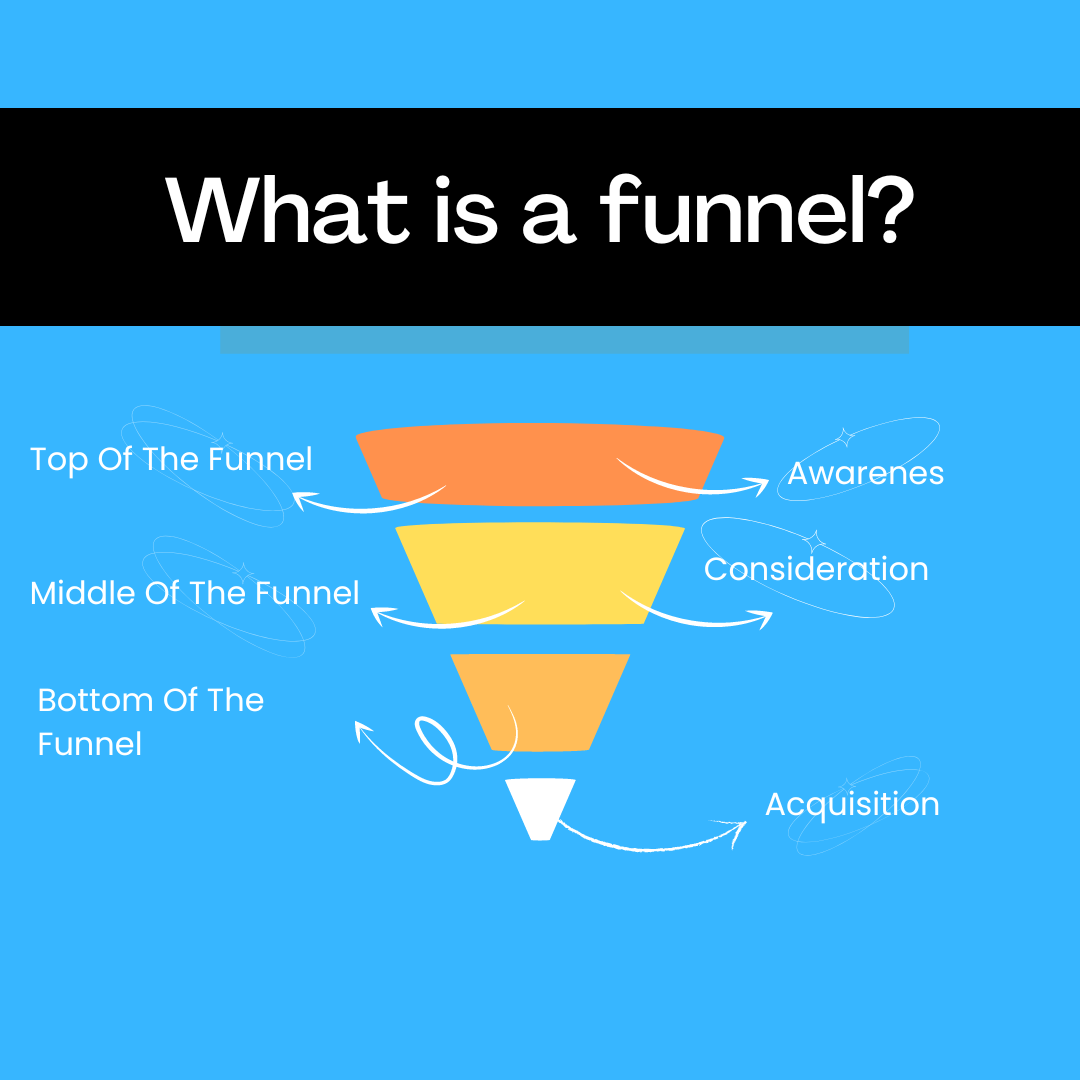
You may have heard the phrase “marketing funnel” before, but what does it mean? A marketing funnel is a digital journey that helps marketers track and measure their success in bringing customers from awareness to loyal fans.
The stages of this process are called steps (awareness), engagement ( interest ) conversion into customer retention or purchase. The direction which moves along these levels varies based on different business goals; however there’s always an initial step where you reach out with your message – either directly via email campaigns like targeted emails announcing new products coming soon! Or from paid channels like Facebook ads and a combination of different touch points.
Quite simply, a marketing funnel is the intentional path you take your prospect through from unaware prospect to a happy customer.
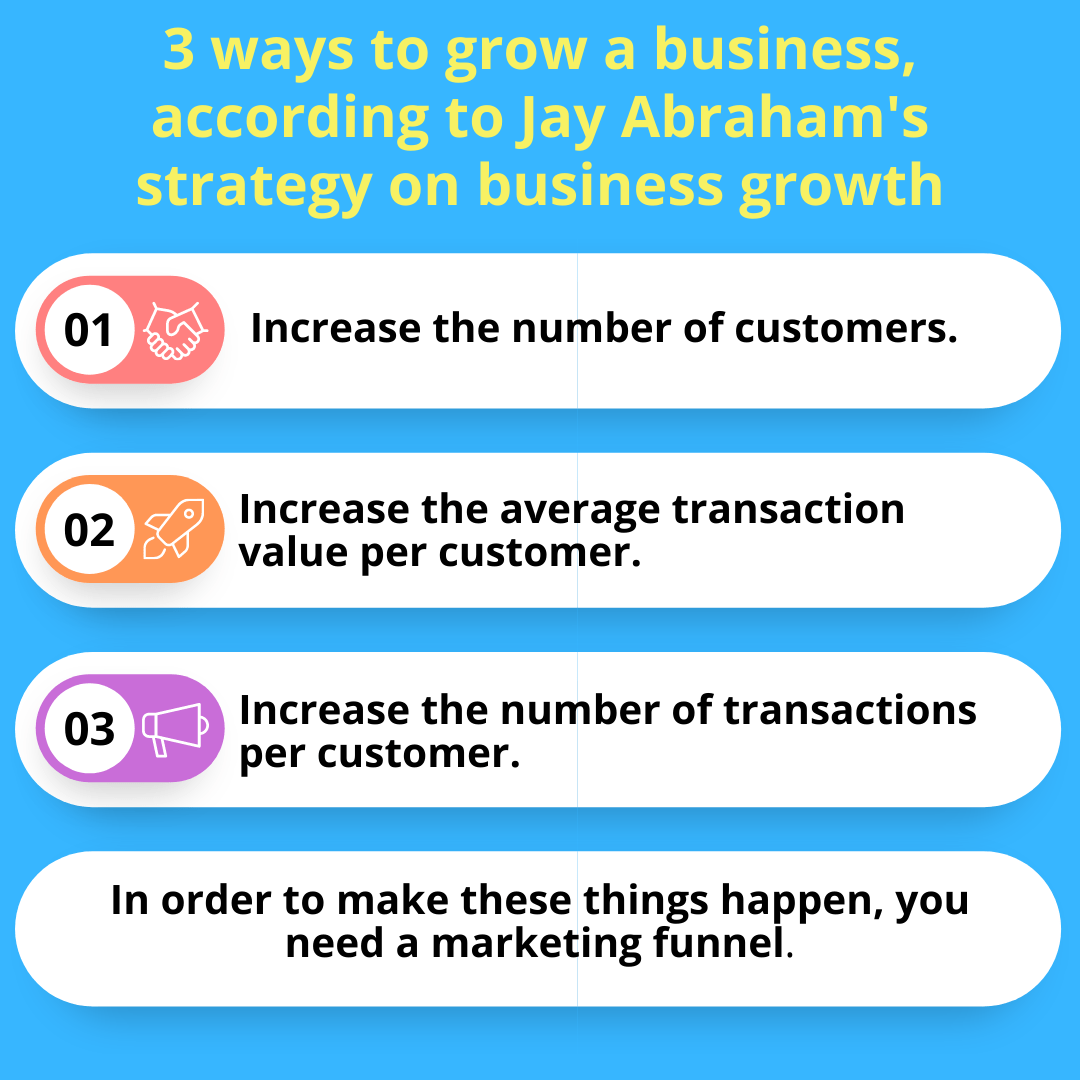
There are only four ways to grow a business, according to Jay Abraham’s strategy on business growth:
- Increase the number of customers.
- Increase the average transaction value per customer.
- Increase the number of transactions per customer.
A business needs to develop a marketing funnel to make these things happen.
8 Steps to Build Your Next Funnel
The 8 Steps To Build a Funnel Include:
Here are the 8 essential steps you need to create a stellar funnel:
- Determine Product/Market fit
- Choose a Traffic Source
- Offer a Lead Magnet (Value Up Front Content)
- Offer and Entry Point Offer
- Offer a Core Product Or Service
- Offer a Profit Maximizer
- Build Your Landing Page
- Create a Return Path
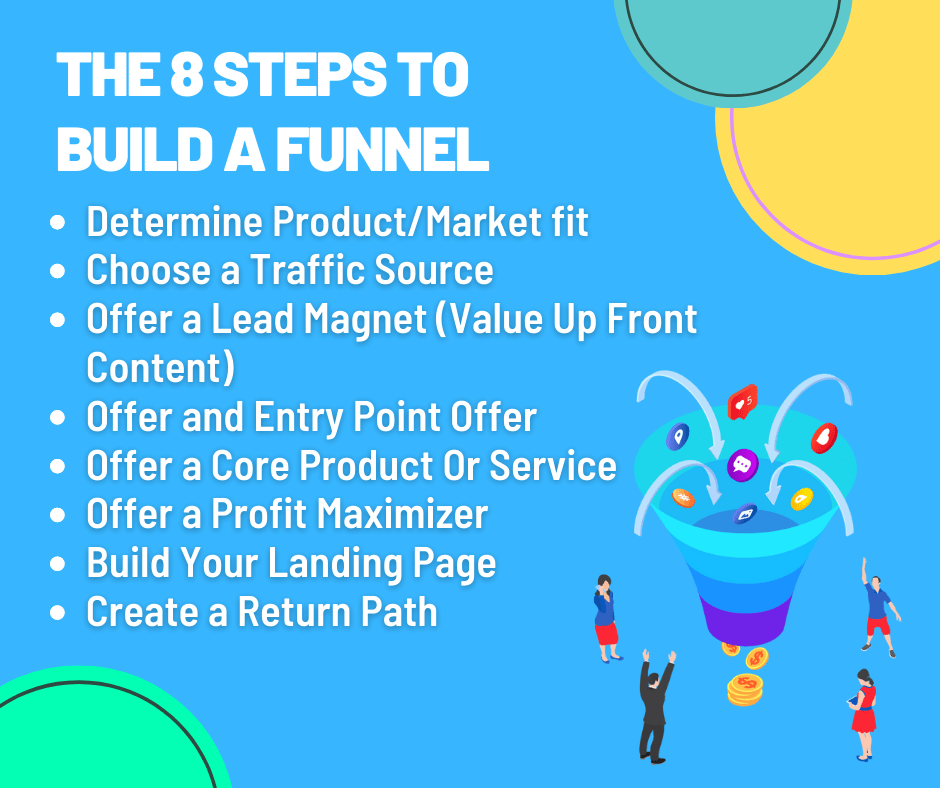
STEP 1: DETERMINE PRODUCT MARKET FIT
To better understand your product market fit, start by asking yourself the following questions. You must understand your consumer in order to market to them effectively.
Who is the ideal client for me? What are their racial and ethnic makeup, hobbies, basic beliefs, way of life, etc.?
What are the problems and pain areas for my customers? What issues does my customer regularly deal with? What’s impeding their progress, exactly?
What is the desired state for my customers? What does customer success look like for you? What do they hope to accomplish?
How does my product assist customers in moving from their issue to their success?
STEP 2: CHOOSE A TRAFFIC SOURCE
There are never any traffic issues because traffic can always be purchased and created from these channels:
- Email Promotion
- Social Media Marketing (facebook. LinkedIn, Instagram)
- Display and Search Advertising (Google, Bing)
- Content Promotion
- Organic SEO
There are a ton of various sites to look for or purchase traffic, but bear the following in mind when making your decision.
Select the traffic source that will help you reach your clients most effectively: Since it’s likely that your consumers have preferences, perform some research to find out which platforms they use most frequently.
Before choosing to employ numerous sources, master 1 traffic source: Buying traffic is a way to attract customers to your sales funnel. Jumping between a lot of different sources will just prolong the time it takes to truly attract any clients.
STEP 3: CREATE A LEAD MAGNET
A lead magnet is an enticing offer that provides a certain amount of value in exchange for a prospect’s contact information (like an email address)
Remember this when making your own…
Make certain that your lead magnet offers a speedy victory: You want your clients to find the information to be extremely valuable.
Make it Specific: Focusing on a particular offer for a certain area of marketing ensures that the leads you provide are of high caliber.
STEP 4: OFFER AN ENTRY POINT OFFER
The entry point offer is an alluring, extremely low-ticket offer that gets your clients to make a purchase (often between $1 and $20).
Entry point offers come in a huge variety of forms…
Books, Physical Goods, and Deeply Discounted Initial Services
More valuable content up front
Due to their low price, they are impossible to resist (even lower than breakeven in some cases.)
It establishes a positive foundation for your relationship with your customer by beginning kindly and by offering tremendous value.
STEP 5: OFFER A CORE PRODUCT
It’s time to make your main offer now!
Remember this…
Not usually do you have to keep all the money made: If you put a portion of your revenues back into buying more traffic, you’ll be able to attract more clients in the future.
Your primary offer must to be still be worthwhile: Make sure your primary offer delivers equally as good, if not better, than what you already overdelivered with your earlier offers.
STEP 6: OFFER A PROFIT MAXIMIZER
Higher-priced purchases that raise the average transaction value per client are known as profit maximizers.
Profit-maximizing strategies include…
Do you want fries with that? Instant upsells Here is your upsell for right now.
‘Cross selling’ Consider “often bought together” ideas.
High-Priced Subscriptions: For more benefits or early access, people will pay.
These deals are essentially different approaches to improve consumer satisfaction, which will raise lifetime value.
STEP 7: CREATE YOUR LANDING PAGES
The landing page is a webpage that houses all of the crucial details about your service. You direct customers there by employing links and advertisements.
A successful landing page requires…
Use the title of your offer or the headline from your landing page as the basis for an attention-grabbing headline.
A picture of your proposal People appreciate seeing the merchandise before they buy because they are visual creatures.
Explain the value and benefit they will receive in your compelling copy. Show them how your offer will move them one step closer to the desired after state in your copy. In general, more sophisticated offerings require more copy.
Opt-In Form Below the Fold: Include two opt-in forms if your landing page is longer and people will need to scroll to see it all. both one below and one above the fold.
Terms of Service and Privacy Policy: They must adhere to traffic shop regulations.
STEP 8: CREATE A RETURN PATH
Increase the number of transactions for each customer by using a return path. It’s a strategy to entice clients to return to your business.
The Return Path is anything that prompts a client or potential client to return more frequently, such as…
- Email Marketing
- Exit Offers
- Organic Social Media (like Twitter, Facebook, and LinkedIn)
- Loyalty Programs
- Content Marketing
- Outbound Sales Calling
- Ad Retargeting
Use email and text automation to continue to communicate with prospects. Send more relevant valuable info. Send info about your company.
Use Email + Text To…
- Send continued value
- Send info about your brand and business
- Pivot to your goal CTA
I think we’ve covered some really good things so far. We went over funnel structures, Facebook ads, landing pages, and email follow-ups.
But we are not done yet.
I’m sure a lot of you are overwhelmed maybe with information overload which is why I want to share this next strategy.
Marketing Skill #3
Digital Advertising
Create Ads With Winning Strategies & Best Practices
Online advertising is an effective way to reach out to potential customers. In this section we’ll cover the the info to help you get started.

What we’ll cover in this section about paid ads:
- What is Paid Advertising?
- The Main Advertising Mediums
- The 3 Pillars of Paid Advertising
- Planning and Budgeting
- Paid Advertising KPI’s
Part 1: What is Paid Advertising
Digital advertising is just that… ads that are digital!
It’s a way to get your products, services, messages, and brand as a whole in front of new customers online
Your ads can look like images, short or long video clips, or just text.
These ads come to customers through a variety of channels (websites, search engine results, pre-roll videos, etc..) but they all attempt to do the same thing: Increase awareness!
Why Should You Use Paid Advertising?
- Paid ads are targeted: You control who sees what ads
- Paid ads can be turned ON or OFF, UP or DOWN:You can control how many people you are attracting
- Paid ads are relatively predictable: You put money in, you’ll get leads out
Digital advertising is just that… ads that are digital!
It’s a way to get your products, services, messages, and brand as a whole in front of new customers online
Your ads can look like images, short or long video clips, or just text.
These ads come to customers through a variety of channels (websites, search engine results, pre-roll videos, etc..) but they all attempt to do the same thing: Increase awareness!
Part 2: The Main Advertising Mediums
“ADVERTISING AS A WHOLE HASN’T CHANGES ALL THAT MUCH OVER THE YEARS…. ALL THAT’S REALLY CHANGED IS THE SPACES THEY OCCUPY”
The Top Advertising Channels
- Facebook, LinkedIn, Instagram
- The Google, Amazon, Bing
- Youtube, Netflix, Hulu
- Spotify, Pandora
- TikTok
Start With Intent!
When it comes to deciding where to put your ads, it’s important to understand your customers intent when they are using different mediums:
- Passive Entertainment (Radio): Spotify, Pandora
- Active Entertainment (TV) : Youtube, Hulu, Netflix
- Passive Inspiration (Newspaper) : Facebook, LinkedIn, Instagram
- Active Research (Catalog) : Google, Bing, Amazon
Understanding your customers intent will help you better decide where the pattern interrupt should be, and thus where your money is best spent
Part 3: The 3 Pillars of Paid Ads
PAID MEDIA BREAKS DOWN INTO 3 CORE ELEMENTS:
- The Offer
- The Audience
- The Creative!
1: The Offer
While this is typically out of the paid ad managers control, it’s important that they have a thorough understanding of it.
You need to know:
- What is the core offer?
- What are the different entry point offers
- What are the logical upsells from the entry point offer to the Core offer ?
2: The Audience
The audience is the group of people you will target your ads for. You need to know the right audience so you can use the proper targeting settings when building ads.
You need to know:
- What does your ideal customer look like? (Demographic information like age, income level, title, ect…)
- What is your ideal customer interested in? (Books, TV, other companies, etc..)
- What are the pain points/problems that your ideal customer has that will be solved by your offer?
- What is your ideal customer hoping to achieve?
3: The Creative
While this is typically out of the paid ad managers control, it’s important that they have a thorough understanding of it.
You need to know:
- What is the core offer?
- What are the different entry point offers
- What are the logical upsells from the entry point offer to the Core offer ?
Part 4:Planning and Budgeting
Your Goals: Understanding Ads Funnel Structure
Top of Funnel: Making people aware of your brand
Middle of Funnel: Showing people how your products can solve their problems
Bottom of Funnel: Encouraging your ideal customers to buy
Your Customers Goals: Understanding Ads Funnel Structure
Top of Funnel: Unaware that a problem exists. More interested in Entertainment
Middle of Funnel: Becoming aware of a problem they may have and passively learning more about what solutions are out there
Bottom of Funnel: Actively searching for the solution to their problem
Planning Your Ads Strategy
- When building out ads for each stage in the funnel, make sure you are aligning those ads to you customers needs at that stage.
- Try to put your ads on mediums/platforms where your target market hangs out!
- Create a variety of different Top of Funnel ads, and constantly be testing new creative!
Your Customers Goals: Understanding Ads Funnel Structure
Top of Funnel: Unaware that a problem exists. More interested in Entertainment
Middle of Funnel: Becoming aware of a problem they may have and passively learning more about what solutions are out there
Bottom of Funnel: Actively searching for the solution to their problem
Great paid ad strategy includes the three main points:
Showing the right person the right offer, at the right time, in the right way.
Planning Your Ads Budget: Tips For Success
You must use tracking so you can continue to maximize your budget.
Each campaign must have a specific target and KPI so that you can see exactly how the budget for that campaign is being spent.
You should understand the importance of getting a lead and closing a sale since you want your ROAS (Return on Ad Spend) to be at a ratio of roughly 4:1 (for every dollar you put in, you get $4 worth of value out).
Understanding the Funnel For Budgeting Ads
Top of Funnel: 80% of your budget will go here
Middle of Funnel: 20% of your budget will go here
Bottom of Funnel: 10% of your budget will go here
Planning Your Budget: Deciding Your Budget
Your budget will be spent primarily toward the top of the funnel. Since awareness is the main goal of paid advertising.
As most of that spending will be spent on “plugging a leaky funnel” with retargeting—basically, urging consumers to buy products they have considered—the middle and bottom of your funnel should remain relatively low.
Allocating your budget to ads that work effectively and testing new ads frequently to see if they perform better are the keys to effective ad spending. Similar to a scientist, an ad manager is constantly conducting tests.
Part 5:Paid Advertising KPI’s
Media KPI’s
- CPM – Cost per thousand impressions
- CPV – Cost per view
- CTR – click through rate
- CPC- cost per click
- CPL – cost per lead
- CPA – cost per acquisition
- CPO – cost per order
- ROAS – return on ad spend
Offer KPI’s
- Bounce Rate
- Page Load Time
- Conversion Rate
- LTV – Lifetime Customer Value
I think we’ve covered some really good things so far. We went over paid ads strategies and structure.
But we are not done yet.
Marketing Skill #4
Email Marketing And Drip Automation
Stay In Touch With Your Marketing Contacts To Strengthen Your Funnel
Learn about email marketing strategies and best practices.
What We’ll Cover In This Section:
- The 3 Types of Emails
- The 5 Types of Email Campaigns
- Email Best Practices
- Email KPI’s

Why Email Markeing Is So Important
- Email has become so ingrained into our daily routine, that we check it without realizing it.
- In 2020, an average of 293.6 BILLION emails are sent a day
- The average ROP for every 1$ spent on Email Marketing is 42$
- The average open rate for a welcome email is 82%
- Emails with personalized subject lines generate 50% higher open rates
- Sending 3 abandoned cart emails results in 69% more orders than 1 single email
- Videos added to your emails increase click through rates by 300%
- 49% of consumers would like to receive promotional emails from their favorite brands
Part 1: 3 Types of Emails
- Transactional Emails
- Promotional Emails
- Content Emails
EMAILS ARE TOOLS, SO YOU WANT TO USE THE RIGHT EMAIL FOR THE RIGHT OCCASION JUST LIKE YOU WOULDN’T USE A SCREWDRIVER TO HAMMER IN A NAIL.
Transactional Email
These are emails that typical have an exchange of vital information the customer needs such as…
- Shipping notifications with tracking info
- Login credentials
- Invoices or receipts
- Cancelation requests
These are typically sent from the customer service team
While vital, these emails are often overlooked — a great transactional email can seriously boost customer relationships
Promotional Emails
These emails typically contain some form of advertising or promotional content with the intention of…
- Generating quick sales
- Supplying your sales team with qualified leads
These emails feature a lot of copywriting and are frequently written in the brand or figurehead’s voice.
It’s crucial to have a timetable for sending promotional emails, but you shouldn’t send them every day because that will deplete your email list and give the impression that your company is unethical.
Content Emails
These emails typical include some type of valuable content, with the goal of…
- Providing value in advanced
- Nurturing your relationship with your customers
Newsletters, free resources, and product highlights are all great types of content to use.
You can use metrics like click through rate and email opens to determine if your customers are gaining value from your content.
Part 2: 5 Types of Email Campaigns
Welcome Email Campaigns
These promotions serve to welcome and manage the expectations of your new subscribers.
Tips:
Be prompt: Send right away after joining
Make sure your subject line is clear to prevent confusion among your new subscribers.
Make the Greeting Particular: Use resources with auto-fill to add their name! Once more, doing so helps them feel welcome and raises open rates.
Assign a next step: Tell them what to do next or demonstrate some content for them. You want to persuade them to take action.
List your social media accounts: By providing them with additional content and connecting opportunities, it aids in indoctrination.
Engagement Email Campaigns
These efforts help your marketing team close deals and generate leads, or they may help your sales staff close leases.
Tips:
Be Particular: Write in the first person, invite feedback, and sound human.
Tell A Story: People are more receptive to narratives
Use a Strong CTA: Clearly state the call to action and make it simple to use (CTA buttons are great for this)
Make sure everything is mobile-friendly.
People like to connect with emails, so linking your images makes it that much simpler for them to find your website.
Ascension Email Campaigns
These advertisements encourage logical upsells and/or reward early subscription updates.
Tips: Be cautious Giving someone an upsell that doesn’t applicable to them is illogical.
Speak About The Advantage: Describe how this upsell will assist clients in achieving their objectives.
Segmentation Email Campaigns
These advertisements encourage consumers to “raise their hands” and express interest in specific deals.
Ideas for segmentation:
Demographics: Details like age, gender, job title, amount of income, etc.
Quiz outcomes: Create a quiz or survey to learn more about the preferences of your clients, and then segment depending on the results.
Segment email engagement by active vs. inactive recipients. The deliverability of emails depends on this.
Geographical Regions Send local webinars, scheduled emails, and regional marketing.
Recommendations based on previous purchases
Recommend products with a similar price range to what was spent in previous purchases.
Reengagement Email Campaigns
These advertisements target less engaged clients and make an effort to get them to engage more frequently.
Why Reengagement Matters: It aids in re-engaging your list’s subscribers.
identifies those you should cross off your list.
It’s crucial to maintain list hygiene because it affects the overall effectiveness and health of your email list.
makes certain that you don’t miss out on leads
helps you maintain low ESP spam rates
Part 3: Email Best Practices
NEVER RUN 2 MONETIZATION CAMPAIGNS AT THE SAME TIME
This exhausts your lists and turns your brand into a seam account. Leave space between your monetization campaigns to avoid people unsubscribing or loosing interest in your business.
THE BEST DAYS TO HOST WEBINARS ARE ON TUESDAYS, WEDNESDAYS, AND THURSDAYS
This is because most people reserve the bandwidth for the middle of the week. Monday is usually reserved for getting the week setup and Friday is for winding down the week.
THE BEST TIME TO CLOSE A SALE IS ON A WEDNESDAY OR THURSDAY
This is also coordinated with sales teams are the busiest during the week.
SCHEDULE THE EMAILS IN YOUR CAMPAIGN TO GO OUT MONDAY-THURSDAY AT 9 AM
This is when general email engagement is the highest. It’s the beginning of the work day for most people and when they are most active on their email accounts. But don’t forget to allocate for different time zones
SPLIT YOUR EMAIL LIST INTO 2 SEGMENTS: ENGAGED AND UNENGAGED (NO PURCHASE IN THE PAST 30 DAYS)
Take the best performing emails from your engaged list and send them to your unengaged list. This gives your less interested audience your top content and increases the chances that they become engaged.
MAKE SURE YOUR EMAIL MARKETING CAMPAIGNS ARE ALIGNED WITH YOUR COMPANY’S PROMO CALENDAR
This ensures that your brand is consistent across channels, keeping your products and services top-of-mind for your customer.
Part 4: Email KPIs (Metrics)
Email Metrics You Should Be Tracking To Improve Performance
- Open Rates
- Click Rates
- Click-To-Open Rates
- Unsubscribe Rates
- Spam Rates
The Ultimate Guide To Learn Digital Marketing
Tips – Strategies – Career Guide – & Free Training
How To Learn Digital Marketing
How can one effectively learn digital marketing in the year 2022 for no cost and while remaining in the convenience of their own homes?
You will be happy to know that there are a variety of online tools, both free and paid, that may assist you in developing the abilities necessary to become an expert in contemporary digital marketing.
You will find all of the most helpful marketing tools for teaching yourself digital marketing in the shortest amount of time feasible within this guide.
What is digital marketing?
It is important that you have a solid understanding of what digital marketing is before we continue.
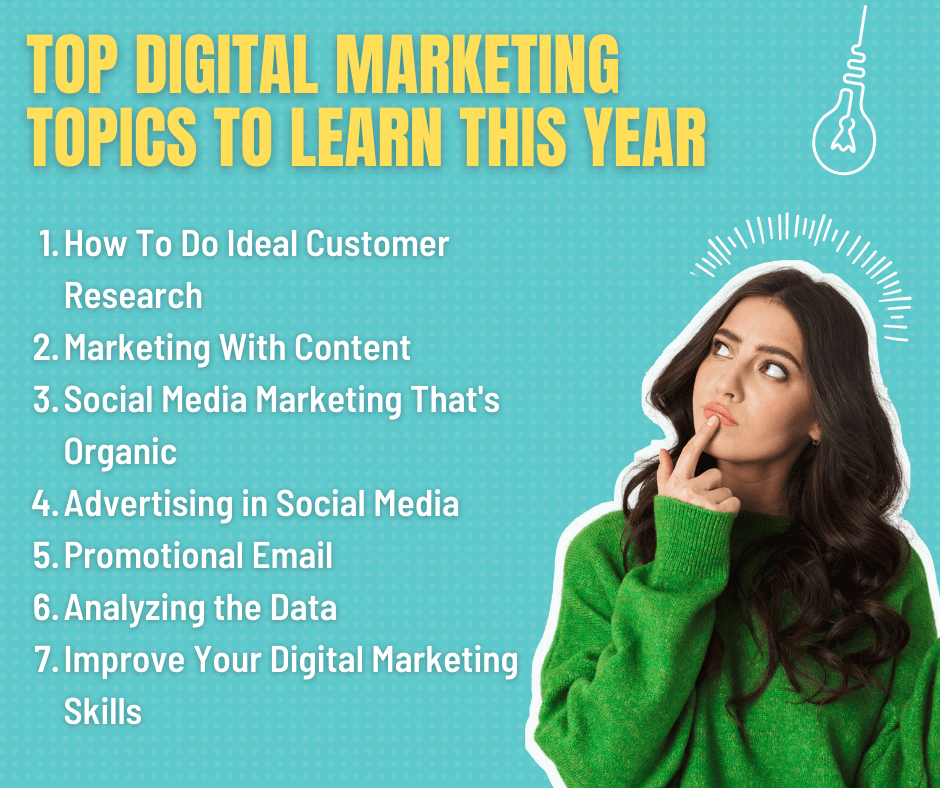
Watching this video will teach you the basics of digital marketing, including what it is and how it operates, if you are new to the field.
The process of promoting and selling goods or services via the Internet through the use of one or more online marketing channels such as search engines, social media platforms, and pay-per-click (PPC) advertising is referred to as digital marketing.
You are able to locate audiences that are interested in your brand, communicate with them, and nurture them so that they eventually become consumers when you use digital marketing.
Search engine marketing, content marketing, pay-per-click advertising, social media marketing, and email marketing are the most essential types of digital marketing.
Digital Marketing Training
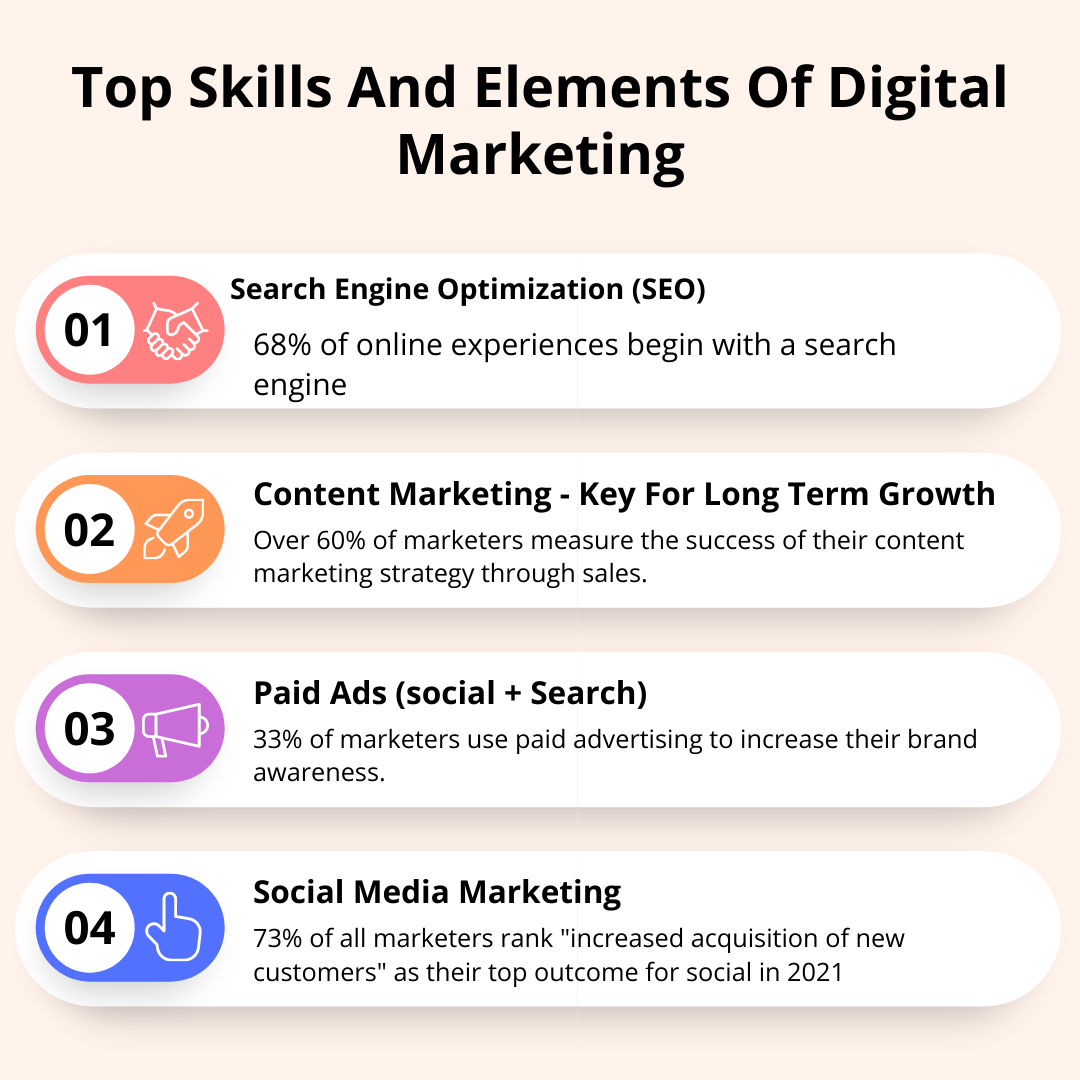
How to Master Digital Marketing Without Spending a Dime.
If you want to have a successful career as a digital marketing consultant, you need to acquire the abilities necessary to operate effectively with all of the many online marketing technologies.
In addition to this, you are going to need to obtain the relevant expertise in order to be able to combine the aforementioned elements in order to have the most beneficial result.
To become an expert in digital marketing, all you need is some hard work and a lot of patience and dedication, but the good news is that you don’t have to go to college or take a course in a traditional classroom setting to achieve it.
You don’t even have to waste time looking for educational resources on Google. I’ve got you covered.
In order to become knowledgeable about digital marketing, you will need to become an expert in the following areas:
- The Marketing of Search Engines
- Marketing with Content
- The Marketing of Social Media
- Email Marketing
- Marketing analytics tools for digital platforms
1. Search Engine Marketing

The marketing of websites through search engines is an essential part of digital marketing.
The term “search engine marketing” (SEM) refers to the practice of selling one’s products or services via the use of techniques such as “search engine optimization” (SEO) or “paid search advertising” (Google Ads or Bing Ads).
Optimizing Results for Search Engines (SEO)

The process of enhancing a website in order to raise its position in the organic results of a search engine is referred to as search engine optimization (SEO).
Because it can bring highly focused visitors to your website, search engine optimization (SEO) is an important component of internet marketing. In comparison to paid advertisements, this method moves at a more leisurely pace, yet it may produce superior outcomes in the long run.
If you are just starting out in the world of digital marketing, one of the most important things for you to realize is that SEO is not a discipline that stays the same over time but rather is always evolving. According to recent reports, Google makes more than 255 adjustments to its ranking algorithm every single year.
This indicates that if you want to pursue a career in search engine optimization (SEO), you need to keep a close eye on the SEO industry for changes and adapt your digital marketing efforts accordingly.
If you want to keep up with the latest developments in the SEO sector, the following sources are excellent places to look:
The official Google Blog, featuring news and updates on all things related to digital technology.
Search Engine Land is a comprehensive resource for all aspects of digital marketing, not simply SEO.
The best site for keeping up to date with the latest changes in SEO is Search Engine Roundtable.
Another aspect of search engine marketing is known as paid search advertising (PSA), sometimes known as pay-per-click (PPC) marketing.
Pay-per-click (PPC) advertising allows you to reach your target clients more quickly than search engine optimization (SEO), but it costs money each time someone clicks on your adverts.
At this time, the most popular pay-per-click (PPC) network is Google Ads, which enables you to display your advertisements within the Google Search Results, on Google properties (such as Gmail and YouTube), and on websites that take part in the Google AdSense program.
Read this if you don’t understand what SEO, PPC, and SEM are all about: Comparison of search engine optimization with search engine marketing.
It is not difficult to learn PPC; in fact, you can become a PPC Certified expert in just a few short months by going through the many online courses that are available (see below).
Obtaining a certification is not sufficient to make someone a competent digital marketing specialist on its own. You need to get some experience managing pay-per-click (PPC) campaigns and get the requisite level of hands-on training.
Your job as a digital marketing specialist is, at the end of the day, to integrate the results of pay-per-click advertising with those of other channels (such as search engine optimization or social media marketing) in order to provide the most favorable conclusion for your customers.
The following is a list of free resources that may educate you everything you need to know about pay-per-click advertising (PPC):
2. Content Marketing
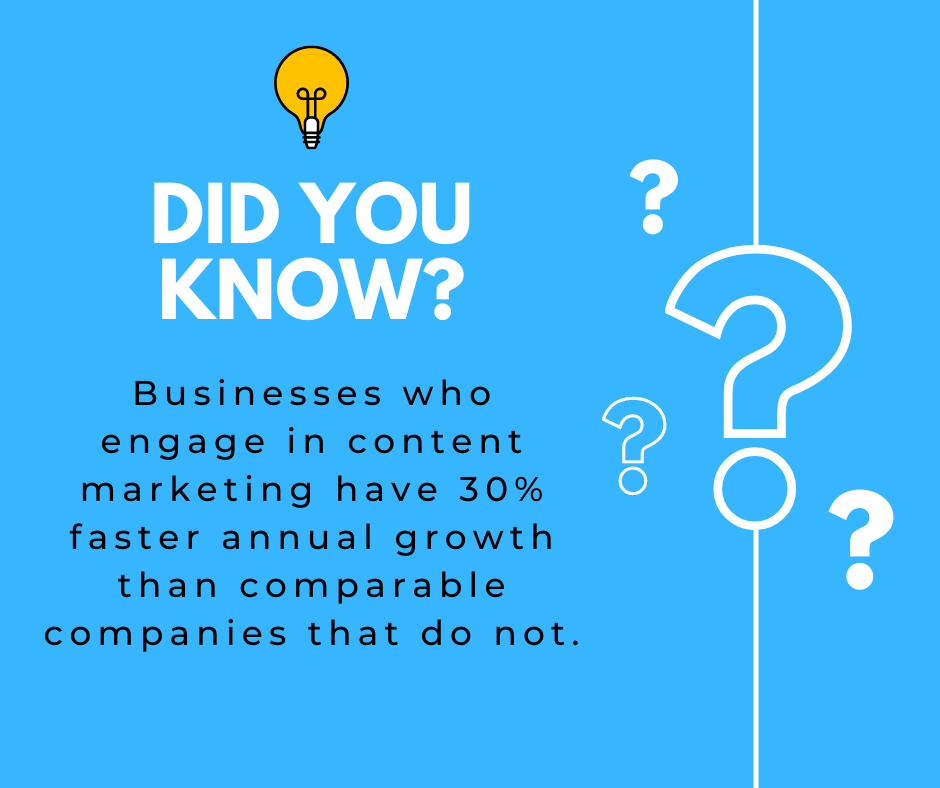
Content Marketing Each and every one of your digital marketing efforts should be centered on content. You need content in order to reach and engage with your target audience across all of the different channels, whether you’re using search engine optimization, social media marketing, or email marketing.
The act of determining, creating, and promoting the appropriate form of content for a certain audience is referred to as “content marketing.”
If you want to become a successful content marketer, you need to have strong writing skills, as well as expertise in SEO copywriting and analytical thinking.
Inbound marketing is focused entirely on achieving goals such as these. Inbound marketing’s purpose is to ensure that the actions of all other digital marketing efforts are coordinated in order to deliver an exceptional experience to the end user.
To have a robust procedure for acquiring new clients, connecting with them, winning their trust, and earning their happiness is the overarching objective of this enterprise.
Those that are able to accomplish this well have a greater chance of expanding their consumer base more quickly than companies that launch isolated campaigns.
As a manager of digital marketing, it is your responsibility to guarantee that all of the various digital marketing campaigns have the same objectives.
Visit the following resources to acquire additional knowledge regarding inbound marketing:
Courses in Digital Marketing – An inventory of the most beneficial programs, both free and for a fee, covering all aspects of digital marketing (Free).
3. Marketing on Social Media Platforms

It’s hard to believe we ever lived in a time when social media platforms like Facebook and Twitter became so ubiquitous. I think we can all agree on that.
Our lives and the way we approach digital marketing have been completely transformed as a result of the rise of social media networks.
Through light of the fact that the objective of digital marketing is to connect with your potential clients in the channels that they find most appealing, a new form of marketing known as social media marketing came into existence.
The term “social media marketing” refers to marketing activities carried out across a variety of social networking platforms with the intention of locating and interacting with a company’s existing or potential clientele.
With more than 3 billion active members on a monthly basis, Facebook is by far the most popular social networking platform.
Following the online courses offered by Facebook is an excellent way to get started learning about social media marketing. They will instruct you on everything pertaining to Facebook Paid Campaigns that you require knowledge of.
When you have reached a point where you are confident in your ability to manage social media campaigns on Facebook, you may further develop your talents by studying marketing strategies for Pinterest, LinkedIn, and Twitter.
4. Email Marketing
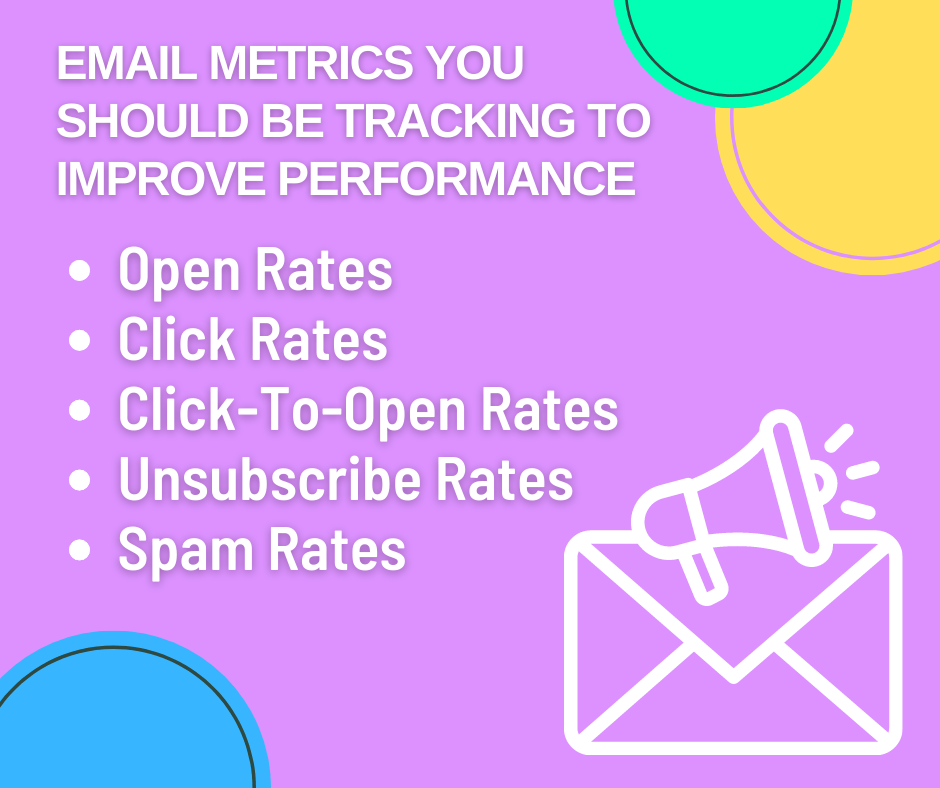
Marketing via email is not obsolete. Email is, contrary to what you would believe, still one of the most successful ways to convert site visitors into consumers as well as to convert existing customers into repeat customers.
If you want to execute successful email marketing campaigns, the first step is to get to know your target. If you don’t, your emails will likely end up in the spam folders of the people who receive them.
When it comes to digital marketing, you can consider email marketing to be the final piece of the puzzle. Email marketing is focused on conversion, as opposed to the acquisition of new clients like other marketing strategies, which are the primary focus.
To get started with email marketing, you need to first settle on the tool that you will use, and then educate yourself on how to operate that product.
5. Analytical Tools for Online and Digital Marketing
One of the abilities that every expert in digital marketing should work on developing is their analytical ability.
It is important to keep in mind that the role of a digital marketing manager is not to learn how to run search engine optimization (SEO) campaigns or social media marketing campaigns (that is the job of the SEO expert or the Social media marketing manager), but rather to know how to orchestrate all processes so that they work towards the same goals.
You will need to become proficient in the use of a variety of data analysis tools, such as Google Analytics and Google Search Console, in order to be able to accomplish this. Data reporting tools include Google Data Studio and digital marketing tools like SEMRUSH.
I’m sure at this point you’ve come to the conclusion that mastering internet marketing is not a simple task at all.
Reading a lot of material and putting in a lot of practice time are both necessary if you want to understand how each method functions on its own and how you may combine techniques to get the best possible outcomes.
The good news is that you may learn digital marketing at home and without spending any money if you use the resources that were listed above. All that is required of you is an eagerness to learn and a great deal of patience.
If you would like the procedure to go more smoothly for you, consider the following suggestions:
You should begin with SEO. A significant number of the ideas that are implemented in PPC, content marketing, and social media marketing are derived from the fundamentals of SEO. Developing your talents in f (SEO) initially will make it much simpler to learn the other aspects.
Practice, Practice, Practice. The practice of internet marketing is not primarily based on abstract ideas but rather on their application. You should attempt to put a plan into practice if you have a solid understanding of the theory that behind it. Keep an eye on the results, make adjustments as necessary, and educate yourself on what went wrong.
Obtain a Certificate.
As you make progress in your studies, you should work toward acquiring a certification. It is a fantastic opportunity to demonstrate your level of experience. You will find connections to online courses that, after completed, will award you with a certificate in the materials that have been provided above.
Collaborate with Digital Marketers who have experience. Your goal should be to gain experience working alongside more seasoned digital marketers. They can make the transition from theory to practice easier, and you can acquire a few tips and tricks that aren’t published in any books or taught in any classes.
Create your own blog focused on digital marketing. If you have your own marketing blog, you will be able to put what you have learnt into practice and demonstrate that you are an expert. When you start writing about digital marketing, it is possible to evaluate how well you know a subject by seeing how well you write about it.
Learn new things constantly. Learning should be a continuous process because digital marketing is a field that is continuously evolving. As a digital marketing specialist, it is your responsibility to remain abreast of the most recent advancements in the industry and to keep your customers informed.
Which are the best websites, in your opinion, for getting a free education in digital marketing? Please let me know in the comments if there are any helpful sites that I have overlooked.
How To Learn Digital Marketing Skills
A growing number of companies are incorporating digital marketing into their overall marketing plan.
When you first begin to incorporate more digital components into your marketing approach, it can feel like there is a lot of information to process. Learning how to use all of the various channels and platforms available to you is going to take some time.
You have the opportunity to reach a larger audience and connect with them in the environments in which they are spending their time, such as the questions they type into Google search, the emails they send, or the time they spend on social media. This is a very positive aspect of the situation that you have the ability to take advantage of.
There is a wealth of evidence to suggest that your current marketing plan would benefit from the addition of digital marketing. The most recent figures suggest that:
In 2021, 70 percent of marketers made investments in SEO.
56% of marketers who use blogging claim that it is effective, and 10% of those marketers claim that blogging delivers the highest return on investment.
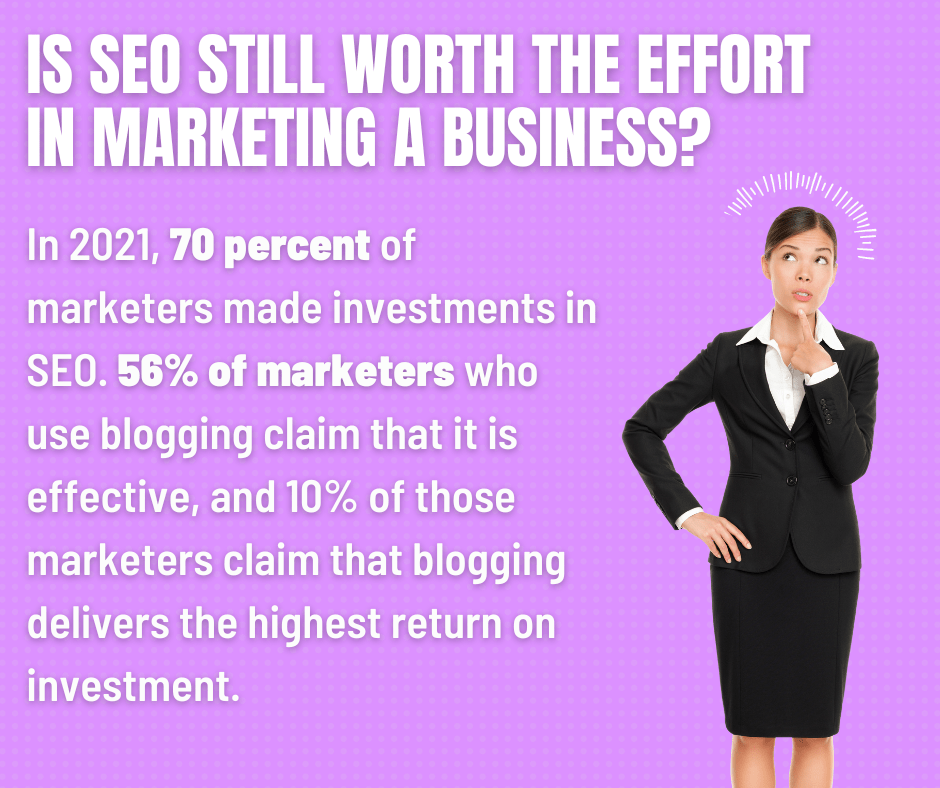
The percentage of marketers who believe content marketing to be a very significant component of their entire marketing strategy is close to forty percent.
It is anticipated that the number of people using social media platforms around the world would approach 3.43 billion in the year 2023.
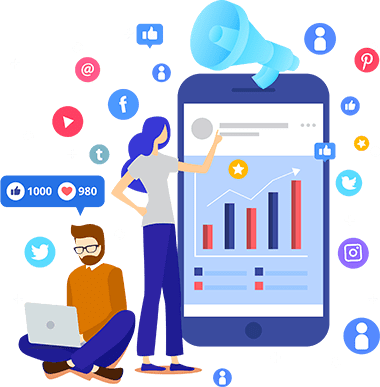
Should I Attempt to Educate Myself About Digital Marketing?
Digital marketing will be an essential part of the advertising strategy that you or your employees implement to improve brand awareness and increase sales, regardless of whether you are the owner of a fledgling startup or the CEO of a successful business. This is true whether you are trying to increase sales or increase brand awareness.
To boost their visibility and increase sales through their online portals, businesses are dependent on the effectiveness of their digital marketing efforts.
According to Chris Brogan, Chief Executive Officer of Owner Media Group:
“Before making a sale, marketers must first establish a good reputation and cultivate digital relationships.”
If you want to convert your online clients, you will need to engage them in a discussion that goes in both directions. The traditional means of advertising, which only go in one direction, are no longer effective. Effective digital marketing campaigns are what are needed in this situation.
Even if you believe that digital marketing is not an essential component of your day-to-day responsibilities, you may be astonished to learn that, in point of fact, it is a vital part of those responsibilities. You are selling yourself and establishing your own personal brand online whenever you tweet, post, share, or remark on social media platforms.
You are actively involved in digital marketing when you make changes to the wording of an email campaign, modify the imagery for a banner campaign, or reach out to a possible online advertising partner.
You can ensure that you are conveying the message you plan to — both personally and professionally — and that you are experiencing the outcomes you seek if you educate yourself on how to be an effective digital marketer. Developing these skills will also allow you to better monitor the work that your employees are producing, which will allow you to determine whether or not the campaigns that your company runs are optimized for success and will also help you identify areas in which your company could use some improvement.
What Capabilities Are Necessary for Your Success in Digital Marketing?
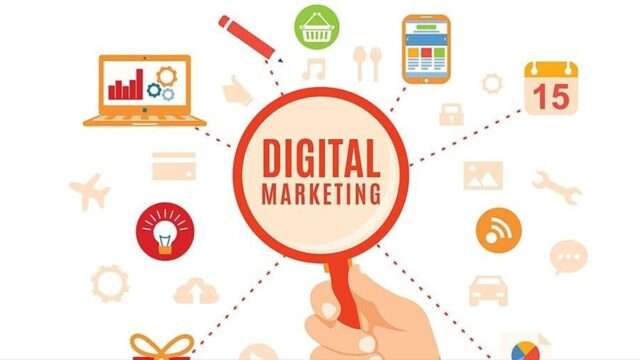
There are many different facets to digital marketing, and it is essential that you educate yourself in all of these different areas — from search engine optimization (SEO) and social media to email marketing — in order to understand how different disciplines work together to drive success. Providing yourself with a general education in all of these different areas will allow you to understand how different disciplines work together to drive success.
You should look for individuals who not only have this basic background but also excel in one to two specialized areas when recruiting digital marketing professionals to join your team. You should do this since it is important that your team be well-rounded. An individual with this fundamental understanding of multiple digital marketing disciplines and specialism in one or two areas is known as a “T-Shaped Web Marketer.” According to Rand Fishkin, who works for the leading search engine marketing site Moz, candidates like this are valuable assets to companies because they understand how different disciplines fit together and can step in to support different areas where it is necessary.
Therefore, you should begin thinking in terms of a T-shape if you want to be able to identify the most qualified candidates for employment at your company going forward.
A Step-by-Step Guide on How You Can Learn Digital Marketing from the Comfort of Your Own Home for Free
The good news is that because to the abundance of free internet tools that are currently available, gaining the skills you need for digital marketing can frequently be accomplished from the comfort of your own home, in your own time. In the following paragraphs, we will explore some of our favorite resources and offer some guidance on how to get started.
The following are the six actions that we take to ensure success in digital marketing:
1. Begin by Doing Some Research
You can acquire the expertise required to become a successful digital marketer by reading free guides that are available online. These guides can take the form of anything from blog posts to eBooks and course materials that have been developed by seasoned marketers, marketing agencies, and universities.
Step 2 – Practice, Practice, Practice
The most effective method of learning something is to immediately put that knowledge into practice for oneself. Establish test campaigns, keep an eye on the outcomes, make adjustments as necessary, and use the experience to improve future efforts. You will be following the instructions that are provided by the study materials that you are utilizing, and there will be no risk associated because you are not yet dealing with digital advertising expenditures for actual firms.
Step 3: Obtain Your Certifications and Qualifications
Now that you feel comfortable with the study materials, you should put your knowledge to the test by participating in the certification and qualifying programs related with them.
Step 4: Create Your Own Website or Blog for Digital Marketing
You will be able to put what you’ve learned about digital marketing into practice and demonstrate your level of knowledge if you maintain your own digital marketing blog. When you seek out guest authors, invite thoughts on your pieces, and offer to write for other sites, it will also help you get a foothold in the business and start making contacts with other people in the sector.
Step 5: Seek Out Instruction and Assistance from Seasoned Digital Marketers
Make effective use of the new connections you’ve established. In order to advance in your career as a digital marketer, you will require the assistance and advice of seasoned professionals who are able to steer you in the proper way.
Step 6: Never Stop Trying to Get Better and Better
The sector of digital marketing is one that is continuously shifting and developing, which means that those who work in it need to be able to do the same. Never stop looking for new ways to improve your talents and new learning materials to use in your studies.
A concise infographic explaining how to get free training in digital marketing.
What Is the Most Respected Certification for Digital Marketing?
Digital marketers who demonstrate competence in both fundamental and advanced facets of Google Ads are eligible to receive the Google Ads certification, which is a professional accreditation. It is essential for anyone who is interested in beginning a career in digital advertising and working in the search, display, mobile, video, or commerce advertising spaces. Pay-Per-Click (PPC) specialists, who rely heavily on Google Ads for the implementation, monitoring, and tracking of campaigns, will find this information to be of utmost importance. You will need to pass two certification exams in order to become Google Ads certified. The first exam is the Google Ads Fundamentals exam, which covers fundamental concepts, the benefits of paid advertising, and best practices for managing paid advertising campaigns. The second exam can be any one of Google’s diverse digital advertising courses, which include search, display, mobile, video, and shopping advertising.
Certified Digital Marketing Professional status is awarded by the Digital Marketing Institute to candidates who demonstrate proficiency in digital marketing by passing all required exams and completing all required coursework. This certification is considered by many to be the gold standard in the field. Professional, Leader, and Master are the three various stages that one can achieve in terms of their qualifications. Obtaining a DMI certification will require an investment of around $1,990 per level of qualification; nevertheless, the recognition will undoubtedly leave a lasting impression on prospective business partners and investors.
Building your online presence, analyzing performance, setting your website and business goals, and a lot more are some of the topics that are covered in the general certification that is offered by Google Digital Garage. This certification covers the essentials of digital marketing. It is an important initial step into digital strategy, analytics, and display advertising that grants certification, all of which you will want to pursue.
Where Can I Find the Best Free Online Courses Regarding Digital Marketing?
There are a great number of free digital marketing courses that can be found online. These courses range from broad introduction courses to courses that focus on specialized credentials for various digital marketing specializations. As a business owner who is interested in increasing the efficiency of the digital marketing campaigns you run, we have compiled a list of the certifications and training programs that we believe will be most beneficial to you.
5 Online Marketing Courses That Are Completely Free
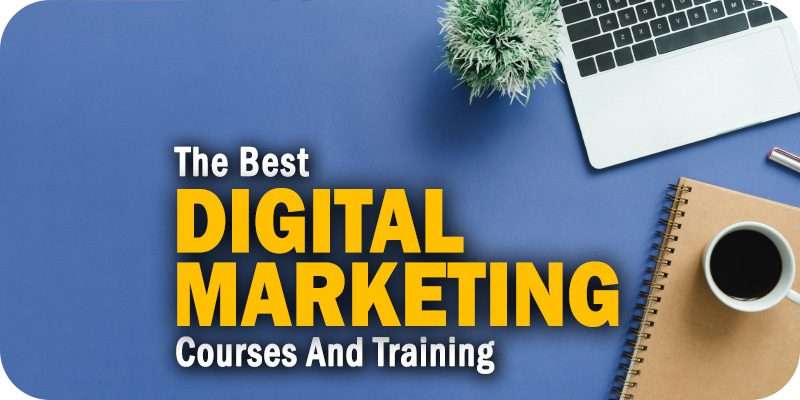
When it comes to digital marketing, it is vital to hone your skills in inbound marketing on a broader scale and ensure that you are familiar with the fundamentals of effective online advertising. You may improve your grasp of digital marketing as well as round out your skill set with the help of the varied selection of courses that we have mentioned below.
The Unbounce landing page conversion course is a free online course that covers various topics. These topics are all aimed to help you understand how to generate higher conversions from your landing pages, which is a vital skill to have in your digital marketing toolkit.
The Google Ads online training course is broken up into sections that cover a variety of advertising specializations, including display, mobile, search, video, and shopping ads. You will have a comprehensive understanding of how digital marketing operates on Google’s network from this.
HubSpot Academy offers a free inbound digital marketing course that is both extensive and comprehensive. The course has over four and a half hours of content that is presented in 38 lectures, and it is completely free. You will acquire knowledge on inbound marketing and lead nurturing, in addition to a wide variety of general digital marketing disciplines, such as search engine optimization and landing page optimization.
Google offers a free training course on how to promote a business using online advertising. The course is broken up into five modules and includes video tutorials that will assist you in developing a successful advertising and marketing strategy that includes email marketing, video marketing, and display ads.
This free tutorial to Google Ads is designed to get you up to speed on the platform as quickly as possible. It includes modules on getting started, mobile optimization, and best practices to assist you in the creation of display ads that are more likely to result in sales.
You won’t be able to get an accurate picture of how well your digital marketing strategies are doing until you have a solid grasp of analytics. Google Analytics is often regarded as the most essential analytics tool among digital marketers, despite the fact that there are numerous other major analytics platforms that digital marketers use to measure critical metrics for their online advertising and search marketing operations (GA). The following courses will assist you in becoming familiar with Google Analytics (GA) and beginning to use it to monitor campaigns.
The introductory video course known as Google Analytics for Beginners is presented by Google and consists of four modules with a total of 17 individual lessons. You will be able to learn about the inner workings of Google Analytics, how to navigate the software’s menus, how to set up dashboards and shortcuts, and many other important aspects of the program by enrolling in this free online course.
In July of 2023, Google Analytics will transition from Universal Analytics, which is the current version of the Google Analytics platform, to Google Analytics 4. It is highly recommended that you read through our extensive guide to Google Analytics 4 in order to be up to speed on the upcoming changes.
When you feel like you have a better grasp on the content covered in the beginning Google Analytics course, you can move on to the Google Analytics Individual Qualification. This qualification covers both fundamental and more advanced Google Analytics principles. Planning and principles, implementation and data collection, configuration and administration, conversion, attribution, reports, metrics, and dimension are some of the learning areas. Before taking the test, you can prepare by studying either the introductory or the intermediate material in the modules that are available to you.
Google Data Studio teaches you how to visualize your data in charts and tables that connect to a number of data sources. This allows you to share insights and interact with your team, while also helping you to speed up the process of creating reports with appealing built-in sample reports. Data Studio may link to a wide variety of databases and social media sites, in addition to Google Ads, Google Analytics, and other products that are part of the Google Marketing Platform. These products include Google Sheets, YouTube, and Google Search Console.
Free Training for Optimizing Your Website for Search Engines
Search Engine Optimization, also known as SEO, is the process of enhancing a website’s visibility in search engine results by enhancing both the content of the website and its underlying technological structure (SERPs). You will need to ensure that you are correctly optimizing and promoting your content in order to see benefits from your efforts regarding search engine optimization (SEO), which is a cost-free method that may help you reach a larger audience organically and boost the success of your online product. You will be able to hone your fundamental SEO skills and begin developing successful search marketing campaigns with the assistance of these free SEO courses.
This section of How to Do Keyword Research for SEO Like a Pro delves deep into the process of selecting the most effective keywords for your SEO campaign.
The SEMrush Academy is an outstanding educational resource for people working in digital marketing. The academy offers free access to a variety of search engine marketing (SEM) study resources as well as exams. In order to become certified in SEMrush, you will need to take the SEMrush SEO Toolkit test.
The full guide to Google Search Console administration that was written by Backlinko is an excellent resource for gaining knowledge on how to make the most of the updated version of the search console and efficiently optimize your technical SEO. This guide will also give you with information on how to increase the amount of organic traffic that you get, as well as advanced marketing techniques and strategies that will help you become a more successful digital marketer.
How to do SEO You will be led step-by-step through the process of analyzing your competitors’ search engine optimization (SEO), starting with the keywords they are ranking for and then on to the kind of content they are employing to rank.
Free Courses on Content Marketing and Digital Public Relations
Producing material of such high quality and persuasiveness that other websites would want to promote and link to is the cornerstone of content marketing, which is a method for making your brand more visible and growing its authority on the internet. The most successful content marketing efforts are those that are carried out in collaboration with other websites, social media influencers, and businesses, all of which stand to gain from the arrangement. You will be able to begin operating your own successful campaigns with the assistance of these free content marketing and digital PR courses.
The free Content Marketing Certification Course offered by Hubspot is an excellent way to get started with the production, reuse, and promotion of digital content. The self-paced training comprises of 11 different lessons spread out over 32 videos, and it will take you little more than four hours to finish it. You will be able to establish a content creation strategy by the time the course is over, as well as develop and repurpose optimized material that is loved by search engines like Google, and become a more strategic content marketer. Understanding content marketing, the power of storytelling, coming up with ideas for content, and constructing a framework for content development are some of the topics that will be covered.
Neil Patel, a New York Times bestselling author and one of the most influential figures in digital marketing, has developed a free, step-by-step guide to content marketing. This guide is intended to familiarize new digital marketers with the idea of using storytelling as an important component of a sales strategy. It is written in a way that is simple to understand and is full of helpful ideas and advice.
Optinmonster offers a free introduction to content marketing, including instructions on how to increase brand awareness within a specific audience through the use of content marketing. The guide contains content marketing examples and frequently asked questions, in addition to covering important subjects like monitoring return on investment and tools for content marketing.
The book How to Get to the Top of Google in 2022 provides an explanation of a variety of content marketing and SEO strategies that can assist you in ranking highly on Google.
Free Training for Copywriters

The structure of any website must always have appealing information that is well optimized, user-friendly, and compelling enough to sell the items and services being offered by the website. Your website will not rank well in the search engine results pages (SERPs), and your clients will not feel driven to make a purchase from you if you do not have compelling material. These handy copywriting courses can assist you in getting started with writing your own website copy in the event that paying a professional copywriter to write the content of your website is a luxury that you are unable to afford at this time.
Copyblogger offers a free copywriting course that gives members access to 16 eBooks and a 20-part email series of lessons covering content marketing, SEO copywriting, email marketing, keyword research, landing pages, and internet marketing. In addition, members have access to Copyblogger’s community forum, where they can discuss copywriting and other topics.
The definitive guide to copywriting by Quick Sprout is a comprehensive guide to digital copywriting that covers a variety of helpful topics. Some of these topics include understanding the product that you are selling, creating a product description, understanding your customers, and carrying out customer research.
Eduonix offers a free online course that may be taken to learn how to become a professional copywriter. This course is full of useful advice that was given by veteran copywriters. You will receive a certificate of completion upon successful completion of the course, which is broken up into five distinct components.
Free Training Programs for Email Marketing
A significant number of companies continue to count on email marketing campaigns as a primary revenue generator and an indispensable component of their digital marketing strategy. These helpful courses can assist you in getting started with email marketing or help you improve your existing efforts by teaching you how to optimize your email campaigns to boost income, improve conversion rates, and attract more clicks to your website.
Mailchimp offers a free email marketing strategy guide that goes over the fundamentals of email marketing, how to construct an email list, how to maximize return on investment, how to design emails, and how to test email campaigns.
Check out our guide on How to Increase Your Conversions Using Email Automation if you’re interested in automating your email marketing and want to learn more about the topic.
Constant Contact provides a free guide that walks users through the process of getting started with email marketing. The guide covers how to select an email marketing service provider, how to gather contacts for your email marketing list, how to create a reusable email template, and how to write persuasive messages.
The free email marketing certification course offered by HubSpot will educate you how to develop a strategy for your business’s expansion via the use of email marketing. Contact management, segmentation, the deliverability of emails, and the analysis of email sends are some of the topics that are discussed.
Free Training on the Art of Marketing to Influencers
Influencer marketing is one of the newest tactics that can be used for digital marketing, and it has already proven to be very beneficial for a great number of well-known brands as well as new businesses. Influencer marketing campaigns are partnerships between a prominent blogger, Instagram celebrity, or Twitter user and a brand that involve an exchange of value. Typically, the brand will provide the influencer with products or services to test in exchange for a review. These campaigns frequently take place across social media platforms. Influencer marketing could become an integral component of your digital marketing plan if the people who make up your target audience spend a lot of time on social media platforms like Instagram or reading blogs. These free courses will assist you in getting started with your influencer marketing efforts and maximizing the value that you derive from them.
A complete Influencer Marketing Strategy course taught by Rutgers University is now available for free on the online learning platform Coursera. The two-step flow model of communication will be used as a basis for discussion of topics such as how to adapt an influencer strategy to a diverse range of organizations, as well as the strategies that should be utilized to ensure the success of your campaigns.
The Introduction to Influencer Marketing course offered by Webfluential is open to anybody and is completely free to take. This course will teach you how to recognize an influencer, which metrics to measure, when to utilize influencers, how to budget for influencer marketing campaigns, and more.
Free Training on Pay-Per-Click Advertising
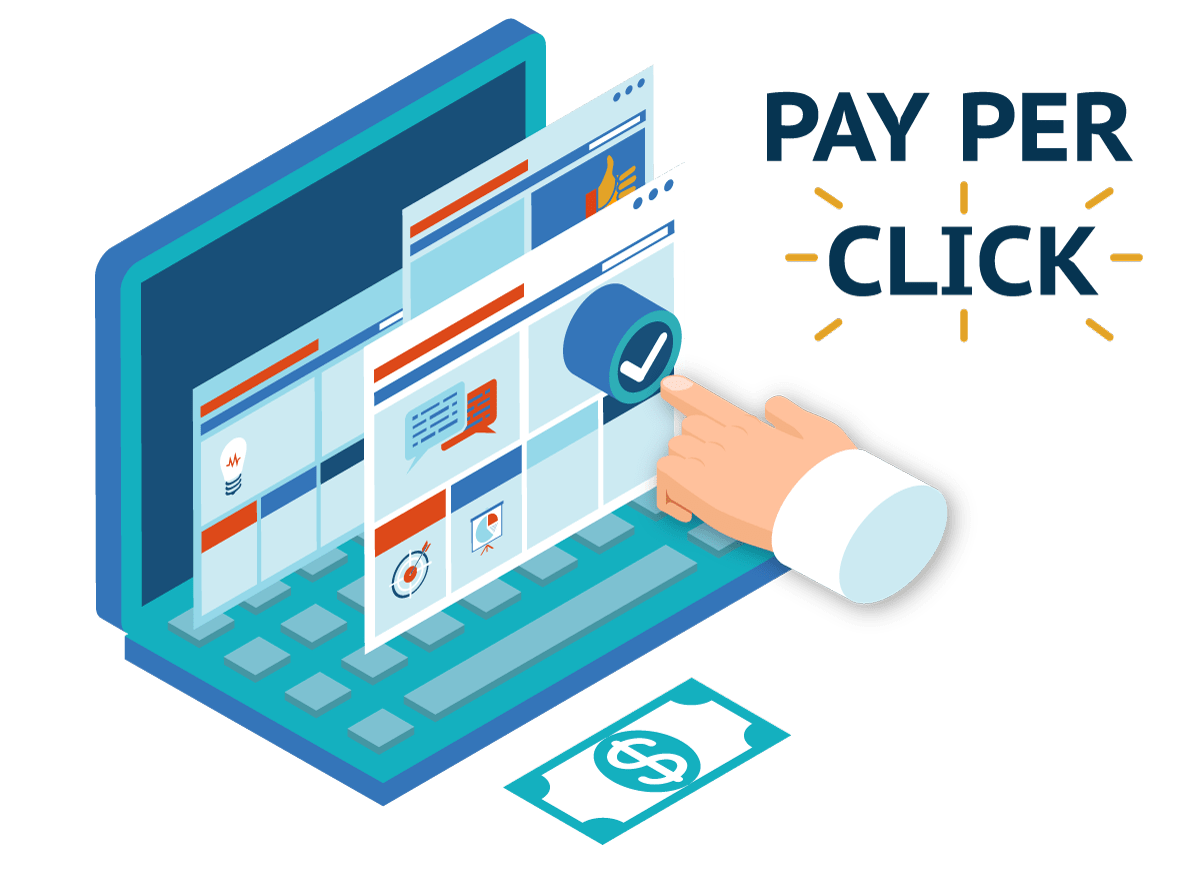
Pay-Per-Click (PPC) advertising is the practice of posting adverts on search engine results pages, where they display above the organic (search) results for a certain key phrase or keyword. These advertisements are paid for each time a user clicks on one of the ads. Pay-per-click (PPC) advertising is one of the most important aspects of digital marketing. If you are just starting out as a company and have not yet achieved a high organic ranking on Google, PPC advertising is the most effective approach to attract visitors to your website.
Google Ads is used by pay-per-click (PPC) experts to create, monitor, and track campaigns. In order to use the platform to its maximum potential, it is essential to have a solid foundational understanding of Google Ads. These free PPC advertisements classes are a fantastic method for business owners to get started with Pay-Per-Click advertising, and I’ve chosen them just for that purpose.
Have a look at our guide that explains a 3-stage pay-per-click strategy that will help you get the most out of your advertising dollars.
WordStream’s free PPC University is an online learning platform that offers tools to help you grow your pay-per-click (PPC) and digital marketing skills. The platform features lessons designed for both novice and experienced users. Keyword selection, ad groups, text ads, quality score, cost per click (CPC), and a wealth of other insights, as well as a variety of other topics, are covered in the section devoted to beginners. You will find these and many other insights to be extremely helpful as you get your career off the ground. The advanced lessons cover topics including pay-per-click advertising (PPC) for lead generation as well as geotargeting.
The Bing Ads Accreditation is a free pay-per-click (PPC)
advertising course that will teach you all you need to know to become a Bings Ads Accredited Professional. This course will walk you through the principles of search engine marketing using the Microsoft Advertising network. You can get the free study guide on your computer, and then when you feel prepared, you can go ahead and take the test.
The free PPC fundamentals course offered by SEMrush is comprised of 36 individual modules and is taught by PPC industry veteran Joel Bondorowsky. You will get the knowledge necessary to be able to establish and run pay-per-click (PPC) campaigns on your own after completing this short course that takes just five hours to complete and covers many different aspects of pay-per-click advertising.
Free Courses on Various Social Media
You have the single greatest potential to effectively communicate with relevant target audiences online by utilizing social media. Before you start spending your valuable advertising budget on Facebook ads and Instagram content, make sure that you take one or two free social media courses so that you can really get a handle on each of the major platforms you plan to advertise on. This will allow you to better target your ads and maximize their effectiveness.
The Social Media Quickstarter offered by Constant Contact is a no-cost training program that teaches participants how to combine email marketing and social media marketing in order to increase the effectiveness of both channels. The training consists of a series of classes that are broken down into individual steps. Some of the subjects covered in the training are digital marketing strategies for Facebook, Twitter, and YouTube, as well as online listing and review sites. This introduction to social marketing class is great for novices because it emphasizes hands-on learning and gives real-world applications of the concepts covered.
The free Twitter marketing guide offered by Hootsuite is an in-depth resource that can be used by anyone interested in getting started with Twitter marketing. The course will cover a variety of topics, including how to establish a marketing plan for Twitter, how to set goals that are measurable, how to identify target audiences, how to audit your Twitter accounts, and how to integrate Twitter into your overall social marketing strategy.
You can maximize the effectiveness of both your account and the money you spend on advertising with the help of Pinterest’s own recommendations for best practices. Creative best practices, pin techniques, and board set-up and organization are some of the topics that will be covered.
A comprehensive guide to marketing on LinkedIn is available from LinkedIn. This guide covers a wide range of topics, including how to market on LinkedIn and set up company pages, sponsored content, and expanding the reach of your content marketing strategies to share relevant and targeted content with professionals.
Free Online Courses in Video Marketing
In this day and age of advanced technology, video marketing is frequently regarded as a more financially prudent choice than purchasing television advertisements. You have the option of spending money on YouTube pre-roll advertising, which play before a viewer sees a video that they have clicked on. Alternatively, you may upload your video advertisements to Facebook and have them play as a person reads through their news feed. When it comes to designing your video marketing campaigns, these are only two of the many alternatives available to you; for additional information, take a look at the free video marketing courses that we have picked.
You will learn how to build a channel on YouTube, as well as how to expand it, optimize it, and monetize it, through the YouTube Certification program. The certification is free to obtain and is valid for a period of 18 months beginning on the date you pass it; it is a crucial step for anyone interested in video marketing as part of their digital marketing career.
HubSpot Academy is a free training that will teach you how to improve how you attract, engage, and keep your audience. This course focuses on online video marketing. It includes four different classes totaling a total of 28 videos, along with four different quizzes. You will be awarded a completion certificate once the training has been successfully completed.
Skillshare offers a plethora of free video marketing courses, all of which can assist you in making your video campaigns more effective. Discover the variables that determine a video’s position on YouTube, the fundamentals of video marketing, the pillars of YouTube, and the five tried-and-true methods for boosting the reputation of your YouTube channel.
Does It Make Sense to Invest Money in a Digital Marketing Course?
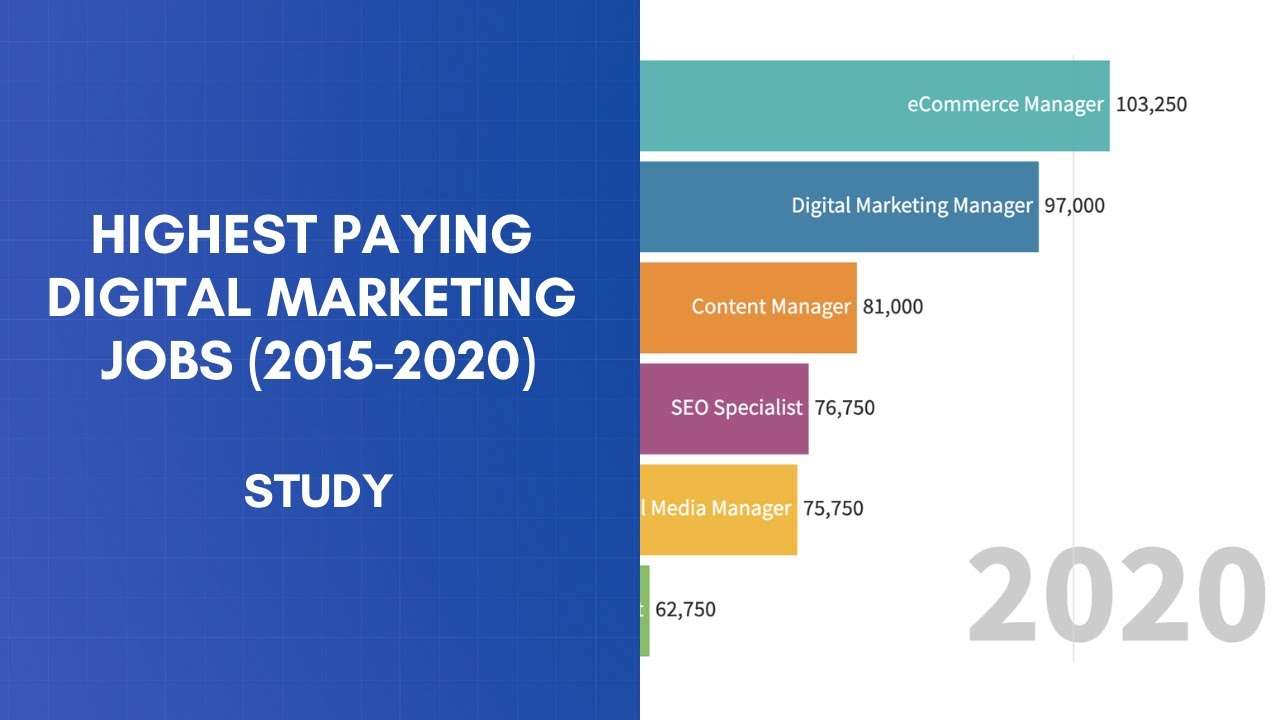
If, like the majority of modern companies, the success of your business depends on effective online marketing campaigns, then it is well worth paying a one-time fee for a digital marketing certification that signals your expertise to potential investors and business partners. Such a certification is offered by many different organizations.
You can demonstrate to prospective customers and investors that you are an expert in social marketing by purchasing the Hootsuite Social Media Marketing Certification, which is offered by the Hootsuite Academy. This certification costs $199 USD and provides you with an industry-recognized certification. In addition to the tuition for the class, you will receive a listing in the Hootsuite Certified Professionals Directory as well as a permanent online certificate that may be linked to from your own website, blog, or any other online presence that you maintain.
Your copywriting abilities can be showcased to their full potential by earning an online certification from the Content Marketing Institute (CMI). The training costs a little less than a thousand dollars but covers a broad spectrum of content marketing issues, including planning, audience, story, channels, process, dialogue, and measurement. Other subjects covered in the training include conversation and measurement. You are free to go at your own pace while working through the program, and you can choose the sequence in which you complete the available courses.
You should absolutely pursue Meta’s Blueprint credentials if you manage or oversee the social media strategies and platforms for your firm. There are a few other Blueprint examinations that may be taken right now, including the Meta Certified Planning Professional exam and the Meta Certified Buying Professional exam. These qualifications will provide you with a comprehensive understanding of how social advertising functions on the most popular social network in the world.
There is a diverse selection of paid digital marketing courses and certifications available on the market today. Ask yourself how much value the certification or accreditation will bring to you personally and professionally before deciding whether or not to pay for a digital marketing course. Once you have determined how much value the certification or accreditation will bring you, determine whether or not the cost justifies the reward.
Should I Invest in Books Labeled “Digital Marketing for Beginners”?
Even though it’s great to learn from free blogs and eBooks — so great, in fact, that I’ve listed the top 10 for you to read right now — there are times when the level of detail you need to become a true Digital Marketing Ninja is only available in a full-length book that costs money. If you want to become a Digital Marketing Ninja, you should consider purchasing one of these books. You should make use of free resources wherever possible, but when purchasing additional resources is required, you should do so.
You can choose from a variety of free eBooks provided by the eMarketing Institute, some of which are Online Marketing for Beginners, Affiliate Marketing for Beginners, and Content Marketing for Beginners, to name just a few of the available options.
In this free eBook offered by Hubspot, you’ll get information on how to use data visualization to win over your audience.
You will learn how to develop content that is straightforward and to the point for your marketing efforts by reading The Conversion Marketer’s Guide to Landing Page Copywriting.
You may get started with on-site optimization with the assistance of Moz’s helpful Beginner’s Guide to SEO, which provides a great deal of information to get you started.
The free Optimisation Survival Guide offered by Optimizely offers ideas as well as recommendations for best practices regarding A/B testing and optimization strategy.
Shane Barker provides a step-by-step guide to influencer marketing on his website, which will instruct you on how to connect with influential people and cultivate long-lasting, fruitful relationships with them.
How can I put my knowledge in digital marketing to use?
Exposure is a great resource for learning about digital marketing. Digital marketing training materials that are easy to understand and comprehensive, both of which were written for you by knowledgeable Marketing Ninjas that are experts in their field.
Put things to the test by launching your own personal project or blog focused on digital marketing.
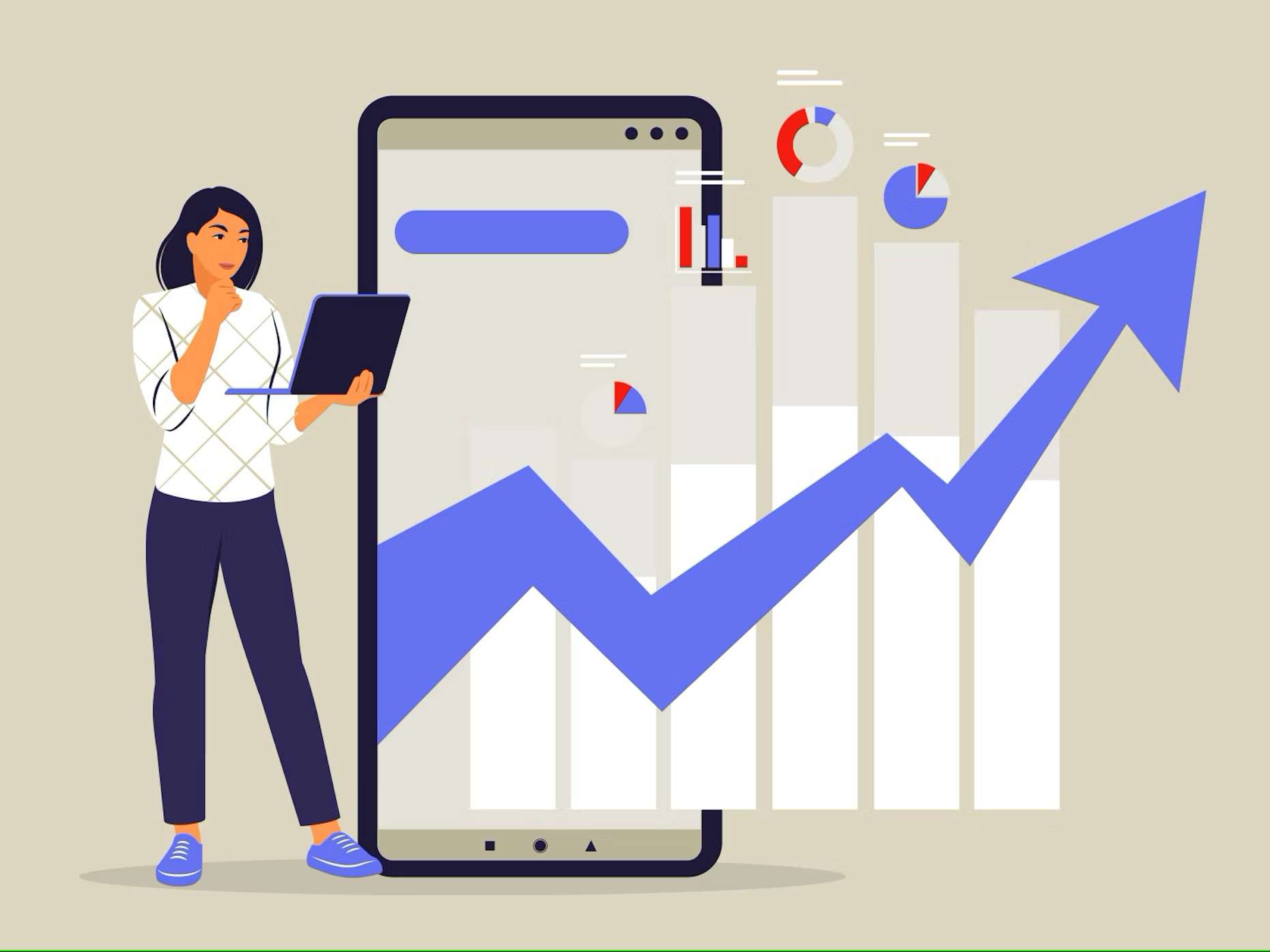
It is essential to put your own ideas to the test and determine whether or not they have the potential to become successful marketing campaigns for either your own company or for a potential client. You need to give search engine optimization (SEO), pay-per-click advertising (PPC), social media marketing (SMM), email marketing (EM), and content marketing (CM) a shot. One of the best ways to do this is to launch your own blog on a subject that piques your interest and run experiments to determine which types of content and campaigns are the most successful. You will gain insightful knowledge about the various platforms and be better able to get to grips with using them as a result of reading this.
Establish Your Own Name in the Market
According to an article written by Matt Sweetwood for Entrepreneur,
“Personal branding has become a need for anyone trying to build their business, acquire a better job, be noticed by the press, move the next level in their profession, or meet new friends of a higher quality.”
Every famous CEO and business owner requires a robust internet presence as well as an effective personal brand that highlights their accomplishments and accreditations in order to succeed. Customers no longer make purchases from companies in today’s highly competitive internet economy; rather, they make purchases directly from other individuals. It is for this reason that Elon Musk’s personal Twitter profile has more than three times as many followers as any of his three primary businesses, and it is also the reason that CEOs such as Arianna Huffington and Richard Branson place a great deal of importance on their respective social media profiles.

As a digital marketer, one of your responsibilities is to keep up with the most significant developments in the field. You can accomplish this by keeping up with the news and stories that are published on major websites devoted to digital marketing. This is an essential time investment for anyone who is truly serious about digital marketing, as Google, Facebook, and Twitter regularly tweak their algorithms and platforms to better serve their users. Because of this, the type of content that comes out on top in the search results is constantly changing, so it is important to stay on top of these changes. All of this takes place as both major and little actors in the industry are making movements that, in a matter of minutes, might completely transform the sector.

